Jul 29, 2016

Welcome to the Real Fast Results podcast! Robin Cutler, from IngramSpark, is here to share her secrets on print on demand (POD) publishing. So, without further ado, let’s welcome Robin… Our promise today is to talk a little about print on demand and what your options are as an author as well as the different platforms in which you can make your book available. Most importantly IngramSpark, but also CreateSpace and some other options that you might have. What we plan to do today is to bring clarity and to offer you some real solutions for how you might move forward with your self-publishing plans.
Defining Print on Demand Publishing
Print on demand, as a technology, has been around for, actually, about 20 years. It really started at Ingram 20 years ago, when Ingram started a company called Lightening Source. That was actually done by John Ingram 20 years ago, and Lightning Source is now the state-of-the-art print on demand company of the world. Print on demand is just like it sounds, where instead of an author or publisher having to stock inventory, through print on demand, you can actually print as you need to and pay as you go. What’s so great about print on demand is that it allows you, as an author and as a publisher, to bring your book to the marketplace and reduce the risk of doing so. We aren’t actually printing until we actually get orders for those books, and those orders can go directly to the customers in many cases. The minimum order in a true print on demand model, like what we offer through Ingram Spark, is one copy. So, isn’t that phenomenal? To me, this is the heyday for self-publishers. They have as much, and as many, the tools at their disposal as the traditional publishers have always had. You know, they have access to IngramSpark, which is the world’s largest book distributor. You can put your content out into the marketplace very easily and inexpensively, through print on demand, and just see what happens without having to sell the family farm, which was not always the case in the old days.
ago, when Ingram started a company called Lightening Source. That was actually done by John Ingram 20 years ago, and Lightning Source is now the state-of-the-art print on demand company of the world. Print on demand is just like it sounds, where instead of an author or publisher having to stock inventory, through print on demand, you can actually print as you need to and pay as you go. What’s so great about print on demand is that it allows you, as an author and as a publisher, to bring your book to the marketplace and reduce the risk of doing so. We aren’t actually printing until we actually get orders for those books, and those orders can go directly to the customers in many cases. The minimum order in a true print on demand model, like what we offer through Ingram Spark, is one copy. So, isn’t that phenomenal? To me, this is the heyday for self-publishers. They have as much, and as many, the tools at their disposal as the traditional publishers have always had. You know, they have access to IngramSpark, which is the world’s largest book distributor. You can put your content out into the marketplace very easily and inexpensively, through print on demand, and just see what happens without having to sell the family farm, which was not always the case in the old days. How to Start a Print On Demand (POD) Project
First of all, you need to have worked with an editor to create a published book. You should work with a designer. Although, if you have the skill to design yourself, that’s fine. Most people don’t, however, so you would probably need to work with a designer to actually format your book in a trim size that can actually be printed as print on demand.Book Trim Size
 There are some limitations on what you can do when it comes to print on demand. You will want to check and make sure that the trim size that you and your designer have selected is one that actually can be manufactured through your print on demand process. There are a lot of choices, as far as what those trim sizes are. The smallest is 4x6, and it goes all the way up to 8.5x11. There’s color, there’s hardcover, paperback, and a couple of different options in bindings that are available now. Even in hardcover, you can have a cloth-printed look to your hardcover book with a jacket on it. 6x9 is the one that’s most heavily chosen by all publishers. That size is the one that’s most commonly seen on most bookshelves, and 5.5x8.5 is another one. For children’s books, we’re starting to see sort of a square trim size. There’s an 8x8 and 8.5x8.5, and also 8.5x11. But, what’s great about a squarer kind of trim size is that it gives you a lot more flexibility in terms of your illustrations. Most illustrations will fit on that sort of format. We are always adding, and I think we’re about to launch a 10.5x10.5 square trim size through Ingram here in a month or so. You can always check and see if we’ve added anything recently. There’s just a lot that’s available. An author, as they are writing their book, they tend to have an image of what they think that finished book should look like. Often times, that image or vision that they have is a non-standard trim size because they think that makes their book unique in the world and on a bookshelf. Unique isn’t necessarily a good thing, in terms of cost, and also, how you distribute your book. In fact, you want it to be standard and part of a format that booksellers can sell easily. So, I say, don’t get hung up on the format. Make sure it’s standard. Make sure, especially as a new author, it fits a print on demand trim size. You can go onto the IngramSpark site, and I’ll give you this information. There are also other places you can check out what various print on demand providers offer. So, I would say that’s Step #1. I think that it is smart to look at similar books in your genre. Not only the trim size, but you also want to look at the pricing of your competitors and books in the marketplace.
There are some limitations on what you can do when it comes to print on demand. You will want to check and make sure that the trim size that you and your designer have selected is one that actually can be manufactured through your print on demand process. There are a lot of choices, as far as what those trim sizes are. The smallest is 4x6, and it goes all the way up to 8.5x11. There’s color, there’s hardcover, paperback, and a couple of different options in bindings that are available now. Even in hardcover, you can have a cloth-printed look to your hardcover book with a jacket on it. 6x9 is the one that’s most heavily chosen by all publishers. That size is the one that’s most commonly seen on most bookshelves, and 5.5x8.5 is another one. For children’s books, we’re starting to see sort of a square trim size. There’s an 8x8 and 8.5x8.5, and also 8.5x11. But, what’s great about a squarer kind of trim size is that it gives you a lot more flexibility in terms of your illustrations. Most illustrations will fit on that sort of format. We are always adding, and I think we’re about to launch a 10.5x10.5 square trim size through Ingram here in a month or so. You can always check and see if we’ve added anything recently. There’s just a lot that’s available. An author, as they are writing their book, they tend to have an image of what they think that finished book should look like. Often times, that image or vision that they have is a non-standard trim size because they think that makes their book unique in the world and on a bookshelf. Unique isn’t necessarily a good thing, in terms of cost, and also, how you distribute your book. In fact, you want it to be standard and part of a format that booksellers can sell easily. So, I say, don’t get hung up on the format. Make sure it’s standard. Make sure, especially as a new author, it fits a print on demand trim size. You can go onto the IngramSpark site, and I’ll give you this information. There are also other places you can check out what various print on demand providers offer. So, I would say that’s Step #1. I think that it is smart to look at similar books in your genre. Not only the trim size, but you also want to look at the pricing of your competitors and books in the marketplace. Making Changes In Your Book After It's Published
Another thing that I wanted to mention about the value of print on demand, and this is a big, big thing, is that you can easily update your book. If you’re a published author, you know that it’s hard to get it right initially. Invariably, no matter how good of an editor you have, or how good of a proofreader, you’ll find something that you want to change. And, it could be something for the good. Let’s say that you won an award. That’s something that you would want to include on the cover of your book. Maybe you’ve gotten a great review. Well, if you’ve printed 5,000 copies, and they’re in your basement, and you’ve gotten this great review or this great endorsement from James Patterson, you’re kind of screwed. You want to add that to your book. Print on demand allows you to easily do that. So, you just update your file, and everything that’s printed after that is the new information on the book. You can also easily update the metadata. There’s a lot of information out there, especially in the self-publishing world, about metadata and the importance of that. So, POD allows you to easily update all of the book information, the pricing, the description, anything you want to update.Next Step: PDF
You've edited your book, picked the correct trim size and evaluated your competition. Now, all you need to get started are the finished PDFs of your book for print on demand. You need a PDF of the cover and a separate PDF of the interior. In creating those PDFs, that’s why It’s really valuable to use a professional who understands how to create a PDF for print. Just a Word version of a PDF, maybe, is not going to work. It definitely won’t work for the cover. It may work in the interior, but it definitely won’t work for the cover. IngramSpark offers a cover generator template. Once you decide your trim size, you can use that template. The cover gets placed on it so that it will fit perfectly. And then, you just create an IngramSpark account, upload your information about your book, and what we call the metadata. Then, at the end of that, you upload your files. We have this great validator tool. On the screen, this scrolling thing happens, and it will show you if you have any issues with your files. If you do, you can go back and have your designer fix them and re-upload them. Once it goes through, you get a proof, you look at it, and if you say, “Gosh, this looks fantastic,” you turn on the distribution for that book. What that means is that your book actually goes out into the world via these data feeds. One of the primary ones is Ingram’s catalogue, and from there it goes out to Amazon, and Barnes & Noble, Gardners, and the UK. You know, it goes all over the place. So, it’s really fantastic. Just to bring clarity, one of the reasons why Ingram is so important for a self-publisher is because booksellers and libraries want to purchase books across a multitude of publishers from a single source. They don’t want to have to go directly to these publishers. They want to just have one or two vendors that they deal with, and so Ingram’s one. Once your book is in the Ingram catalogue, it’s like your book is right there beside all of the Random House books. There’s nothing that marks your book as being self-published. It just looks like any other book in the Ingram catalogue. So, when you are promoting your book to libraries and to booksellers, it helps to elevate you into the realm of professional authors. If you can say, “My book is available from Ingram,” you don’t have to say that it’s self-published. You don’t really have to say a whole lot more than about the book itself and where it can be purchased, and you say that it’s available from Ingram. When you say that it’s from Ingram, it’s implied that it’s been vetted and is of a good quality. That brings up another point, and that is to make sure that your book really is a good-quality book, which, by the way, is not that expensive. I say spend your money in creating, formatting, and marketing your book. Don’t spend your money on inventory. You can always do that. If your book takes off, you have a lot of other options, but especially bringing the book to market as a new author, don’t invest in inventory. Invest in creating your book and bringing it to market.
need to get started are the finished PDFs of your book for print on demand. You need a PDF of the cover and a separate PDF of the interior. In creating those PDFs, that’s why It’s really valuable to use a professional who understands how to create a PDF for print. Just a Word version of a PDF, maybe, is not going to work. It definitely won’t work for the cover. It may work in the interior, but it definitely won’t work for the cover. IngramSpark offers a cover generator template. Once you decide your trim size, you can use that template. The cover gets placed on it so that it will fit perfectly. And then, you just create an IngramSpark account, upload your information about your book, and what we call the metadata. Then, at the end of that, you upload your files. We have this great validator tool. On the screen, this scrolling thing happens, and it will show you if you have any issues with your files. If you do, you can go back and have your designer fix them and re-upload them. Once it goes through, you get a proof, you look at it, and if you say, “Gosh, this looks fantastic,” you turn on the distribution for that book. What that means is that your book actually goes out into the world via these data feeds. One of the primary ones is Ingram’s catalogue, and from there it goes out to Amazon, and Barnes & Noble, Gardners, and the UK. You know, it goes all over the place. So, it’s really fantastic. Just to bring clarity, one of the reasons why Ingram is so important for a self-publisher is because booksellers and libraries want to purchase books across a multitude of publishers from a single source. They don’t want to have to go directly to these publishers. They want to just have one or two vendors that they deal with, and so Ingram’s one. Once your book is in the Ingram catalogue, it’s like your book is right there beside all of the Random House books. There’s nothing that marks your book as being self-published. It just looks like any other book in the Ingram catalogue. So, when you are promoting your book to libraries and to booksellers, it helps to elevate you into the realm of professional authors. If you can say, “My book is available from Ingram,” you don’t have to say that it’s self-published. You don’t really have to say a whole lot more than about the book itself and where it can be purchased, and you say that it’s available from Ingram. When you say that it’s from Ingram, it’s implied that it’s been vetted and is of a good quality. That brings up another point, and that is to make sure that your book really is a good-quality book, which, by the way, is not that expensive. I say spend your money in creating, formatting, and marketing your book. Don’t spend your money on inventory. You can always do that. If your book takes off, you have a lot of other options, but especially bringing the book to market as a new author, don’t invest in inventory. Invest in creating your book and bringing it to market. The Difference Between Ingram and CreateSpace
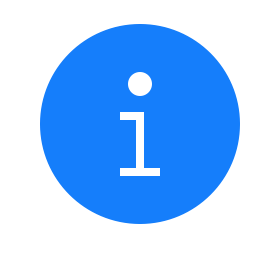 Just for full disclosure, I used to actually work at CreateSpace. I loved working for CreateSpace, and for Amazon, and I feel really proud of the work that I did there. I mainly worked with publishers, not so much with authors, like I do now at Ingram. But, I have nothing but great things to say about CreateSpace. I will say, because this is probably the #1 question that I get. Authors often ask, “What’s the difference between IngramSpark and CreateSpace?” So, I think we can have a discussion that can help bring clarity to authors that are sort of wondering the answers to that question. The difference is that Ingram has much broader distribution. CreateSpace distributes just to Amazon. Although, CreateSpace has a program that they call “Expanded Distribution”. Guess what “Expanded Distribution” is? It’s Ingram. It will put the book in the Ingram catalogue, which is a good thing, but it actually puts the book in the catalogue at a disadvantage to the author. Your book is listed with what we call a “short discount, non-returnable”. It doesn’t really get you what you need if you’re planning to sell to libraries and especially to booksellers. By putting your book into IngramSpark, you make your book available to Ingram and everywhere that Ingram sells; which is about 40,000 retail and library partners around the world. Then, you control and can specify how that book gets listed in the Ingram catalogue. You want that kind of control as an author, and I would advise you to have that control. You can set up the same book, using the same ISBN, and we’ll talk in a minute about ISBNs because I have a lot to say about that. But, you can set up the same book, with the same ISBN, that you own, in both platforms, with the same files. Then, you’ll be pretty-well set. What’s great about having your book on CreateSpace is that your book will always show up as being in stock within Amazon’s catalogue, which is a great thing. You want that as an author as well. What’s great about setting it up with IngramSpark is that in the Ingram catalogue there’s no mention of CreateSpace being associated with your book. Booksellers don’t like to see that. If you walk into the store with a CreateSpace book, you’re likely not to be warmly welcomed. So, you don’t want that. You just set up your book under your own imprint in the IngramSpark catalogue, and you’re good to go. If I had to pick one platform, because a lot of people just want to have one place where they keep everything, I would suggest it be IngramSpark just because it’s the broadest distribution.
Just for full disclosure, I used to actually work at CreateSpace. I loved working for CreateSpace, and for Amazon, and I feel really proud of the work that I did there. I mainly worked with publishers, not so much with authors, like I do now at Ingram. But, I have nothing but great things to say about CreateSpace. I will say, because this is probably the #1 question that I get. Authors often ask, “What’s the difference between IngramSpark and CreateSpace?” So, I think we can have a discussion that can help bring clarity to authors that are sort of wondering the answers to that question. The difference is that Ingram has much broader distribution. CreateSpace distributes just to Amazon. Although, CreateSpace has a program that they call “Expanded Distribution”. Guess what “Expanded Distribution” is? It’s Ingram. It will put the book in the Ingram catalogue, which is a good thing, but it actually puts the book in the catalogue at a disadvantage to the author. Your book is listed with what we call a “short discount, non-returnable”. It doesn’t really get you what you need if you’re planning to sell to libraries and especially to booksellers. By putting your book into IngramSpark, you make your book available to Ingram and everywhere that Ingram sells; which is about 40,000 retail and library partners around the world. Then, you control and can specify how that book gets listed in the Ingram catalogue. You want that kind of control as an author, and I would advise you to have that control. You can set up the same book, using the same ISBN, and we’ll talk in a minute about ISBNs because I have a lot to say about that. But, you can set up the same book, with the same ISBN, that you own, in both platforms, with the same files. Then, you’ll be pretty-well set. What’s great about having your book on CreateSpace is that your book will always show up as being in stock within Amazon’s catalogue, which is a great thing. You want that as an author as well. What’s great about setting it up with IngramSpark is that in the Ingram catalogue there’s no mention of CreateSpace being associated with your book. Booksellers don’t like to see that. If you walk into the store with a CreateSpace book, you’re likely not to be warmly welcomed. So, you don’t want that. You just set up your book under your own imprint in the IngramSpark catalogue, and you’re good to go. If I had to pick one platform, because a lot of people just want to have one place where they keep everything, I would suggest it be IngramSpark just because it’s the broadest distribution. The Use of ISBNs
To distribute a book, you do need an ISBN, which is the international book identification number. You attain an ISBN from, in the US it’s Bowker. In Canada, the Canadian government gives free ISBNs. So, it’s kind of country-specific, but in the US, you can obtain them from Bowker. To me, owning your ISBN is like owning your name. It travels throughout the life of your book, and there’s a different ISBN for every format of the book that you have, and that identifies the format as well. So, you want to own it just because you don’t want your book tied to any one distributor. Anytime your book is given a free ISBN, your book is tied to whoever gave you that free ISBN. You never want that for the life of your book, or even for a short length of time. You’ll regret it in the end, and it’s not a good thing to do. Just to be clear, CreateSpace does offer the use of their ISBN in your book, but you can’t use that ISBN on any other platform but CreateSpace. In addition to that, the publisher is then listed as CreateSpace, which is not necessarily a good thing. On Amazon it’s one thing, but off of Amazon it’s a whole other matter. You should really use the same ISBN on both your IngramSpark and CreateSpace edition. Otherwise, it creates confusion in the marketplace. For instance, you’ll suddenly get Barnes & Noble interested in your book, and they go to the Ingram catalogue. Well, you’ve set up your book via CreateSpace using your free ISBN, and you’ve turned on “Expanded Distribution,” so they see it listed there, but you’ve also assigned your own ISBN to the one that you set up with IngramSpark. So, it takes Barnes & Noble a minute to see that. Then they’re confused, and it doesn’t necessarily put you in the realm of a professional author. Instantly you will kind of have a mark against you. You want to set up your book exactly with the same ISBN that you have purchased and that you own. It will travel along the life and the format of that book on any platform. Like, you don’t want exclusivity anywhere. We don’t require exclusivity at IngramSpark, and I don’t advocate exclusivity for the author. I think you should be as broad as you can and make your book available as widely as possible.Print On Demand Tips
Remember this process:- Use POD when you’re launching as a new author. It’s there to really make it easy and affordable for you.
- Purchase your own ISBN. Make that investment.
- Make the investment in working with professional editors, designers, marketers, and spend your money like that.
- Set your book up, at least in IngramSpark and CreateSpace. If you’re only going to choose one, I would choose IngramSpark.
Real Fast Results Community
If you are diggin’ on this stuff and really love what we’re doing here at Real Fast Results, would you please do me a favor? Head on over to iTunes, and make sure that you subscribe to this show, download it, and rate & review it. That would be an awesome thing. Of course, we also want to know your results. Please share those results with us at http://www.realfastresults.com/results. As always, go make results happen!
Jul 26, 2016
 Welcome to the Real Fast Results podcast! You have made a wise decision to join in today because it is our honor and privilege to bring for the words and advice of Mr. Jack Canfield. In this episode, Jack is going to share how to develop a bestseller mindset. According to Jack, there’s a lot that goes into creating a bestseller, but most importantly, you have to have the right outlook. As you probably know, this man has been able to accomplish more than most people could even dream of. Let’s see what he has to say…
Welcome to the Real Fast Results podcast! You have made a wise decision to join in today because it is our honor and privilege to bring for the words and advice of Mr. Jack Canfield. In this episode, Jack is going to share how to develop a bestseller mindset. According to Jack, there’s a lot that goes into creating a bestseller, but most importantly, you have to have the right outlook. As you probably know, this man has been able to accomplish more than most people could even dream of. Let’s see what he has to say… Benefits to Having a Bestseller Mindset
For me, it has meant selling nearly 500 million books around the world. I’ve had 47 books on the New York Times Bestseller List, and I have been able to travel to 47 different countries and give workshops. As a result, I was in the movie The Secret, and I’ve had lunch at The White House. I hang out with people like Jeff Bridges, and Chaka Khan, people like that who are celebrity friends that I have now. And, you know, I’ve personally been able to stand on the first base line at a Dodger’s baseball game. I’ve had meetings with Bill Clinton, and John Gray, and I could just go down the list of fun things that have happened for me. Most important is the ability to make an impact in the lives of other people. I can remember being in a hotel in New York and watching this girl walk in with a bald head, probably about 12 or 13, obviously doing chemotherapy. I walked up to her, and I said, “I wanted to tell you that I’m supportive of you. I’m Jack Canfield.” “Oh my God! You’re the Chicken Soup for the Soul guy. I’ve read Chicken Soup for the Recovering Soul, Chicken Soup for the Teen Soul, Chicken Soup for the Cancer Patient Soul…” And, you just go like, “Wow! I’m making a difference in the lives of others.” That’s what really matters, the impact you can have. Achieving a Bestseller Mindset, from a Big Picture Standpoint
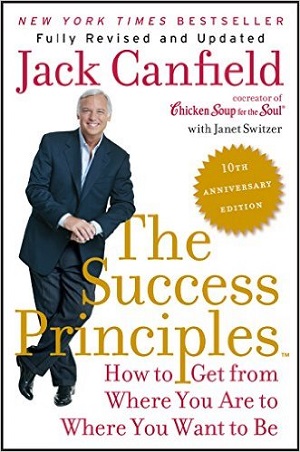 You have to believe that it’s possible for you to have something really important to say, and that you have the ability to say it. So, a lot of it is self-esteem, self-concept, and belief in yourself. Then, I think most people don’t think big enough. One of the quotes that I have in my book, The Success Principles, is by General Wesley Clark, who used to be the head of the NATO forces in Europe for the United States. He said that it doesn’t take any more effort to dream a bigger dream than it does to dream a small dream. In other words, you can think of five zeros after a one, or six zeros after a one, or eight zeros after a one, in terms of your income and in terms of impact. I just set a goal to train one million trainers to do my work by the year 2030. People think I’m crazy, but we’ve already trained 1,500 people since last November and certified them. So, we now have people in 79 countries teaching our work. When I told my publisher, we wanted to sell a billion books by 2020, he thought we were freaking crazy. We’ve sold a half a billion books, and it’s only 2016. The “hockey stick curve” is taking off.
You have to believe that it’s possible for you to have something really important to say, and that you have the ability to say it. So, a lot of it is self-esteem, self-concept, and belief in yourself. Then, I think most people don’t think big enough. One of the quotes that I have in my book, The Success Principles, is by General Wesley Clark, who used to be the head of the NATO forces in Europe for the United States. He said that it doesn’t take any more effort to dream a bigger dream than it does to dream a small dream. In other words, you can think of five zeros after a one, or six zeros after a one, or eight zeros after a one, in terms of your income and in terms of impact. I just set a goal to train one million trainers to do my work by the year 2030. People think I’m crazy, but we’ve already trained 1,500 people since last November and certified them. So, we now have people in 79 countries teaching our work. When I told my publisher, we wanted to sell a billion books by 2020, he thought we were freaking crazy. We’ve sold a half a billion books, and it’s only 2016. The “hockey stick curve” is taking off. 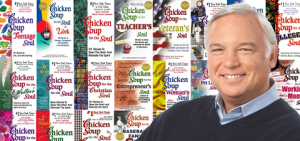 You have to dream big and believe big, and I think you also have to have an attitude and a mindset that it’s going to take work. You have to learn how to market, you have to learn how to do a podcast, you have to learn how to be on Good Morning America. You have to learn how to do internet marketing. You have to have a mindset of studying. You have to be willing to learn. Quincy Jones, who’s 83 years old, the producer of Michael Jackson, “We Are the World”, The Fresh Prince of Bel-Air, etc., said something. He said that when he decided to do television, he went to UCLA, and this was in the 60’s or 70’s, but he said that he took six months of courses in screenwriting, producing, and directing. He said that every field has a structure and a science to it, and you have to study that if you want to be successful, whether it’s music theory, how to be a bestselling author, etc. What is the craft of being a good writer? What is the willingness to get feedback? You have to be able to get feedback. One of the things that I tell people all of the time is that most books get published when people have read them: The writer, the wife/husband, the acquisition editor at the house. Well, with Chicken Soup for the Soul, we had 40 people read every story and grade them on a scale of 1-10. We put that on an Excel spreadsheet, and everything that averaged less than a 9 never made it into the book, including stories that I wrote. It’s like you have to have the willingness to get feedback and get off your ego trip as well.
You have to dream big and believe big, and I think you also have to have an attitude and a mindset that it’s going to take work. You have to learn how to market, you have to learn how to do a podcast, you have to learn how to be on Good Morning America. You have to learn how to do internet marketing. You have to have a mindset of studying. You have to be willing to learn. Quincy Jones, who’s 83 years old, the producer of Michael Jackson, “We Are the World”, The Fresh Prince of Bel-Air, etc., said something. He said that when he decided to do television, he went to UCLA, and this was in the 60’s or 70’s, but he said that he took six months of courses in screenwriting, producing, and directing. He said that every field has a structure and a science to it, and you have to study that if you want to be successful, whether it’s music theory, how to be a bestselling author, etc. What is the craft of being a good writer? What is the willingness to get feedback? You have to be able to get feedback. One of the things that I tell people all of the time is that most books get published when people have read them: The writer, the wife/husband, the acquisition editor at the house. Well, with Chicken Soup for the Soul, we had 40 people read every story and grade them on a scale of 1-10. We put that on an Excel spreadsheet, and everything that averaged less than a 9 never made it into the book, including stories that I wrote. It’s like you have to have the willingness to get feedback and get off your ego trip as well. How Can I Make Myself Feel Like I’m Worthy of a Bestseller?
Here’s the deal. Everybody has a message. Every life has lessons that people have learned. You have to be willing to share that, and if you are willing to be clear that you have something valuable. Now, if you don’t work on yourself, if you don’t do self-introspection, if you don’t take seminars, if you don’t do therapy, if you don’t meditate, etc, your awareness of what you know and how much you know is going to be limited. So, #1, you have to be somewhat committed to growth, somewhat committed to constantly learning and never-ending improvement. CANI, as Tony Robbins likes to say. The reality is that you’ve got to be a learner, and then you share what you’ve learned. The belief is that you’ve got something of value. Mark Victor Hansen used to always say to me, when we were co-authors of Chicken Soup for the Soul… I’d say something, and he’d say, “You have to write that down. Write a blog. Write a chapter.” I’d say, “Mark everyone knows that,” and he’d say, “No Jack, they don’t.” Often, we figure that everyone knows what we know, and the fact is that we all have a lot of unique knowledge. I think that whether it’s through affirmations, through meditation, whatever it may be, you’ve got to start with the idea that, “I have something to share, and I am worthy of success.” My wife is writing a memoir right now, and she has had some amazing lessons in her life. She’s so afraid that people are going to judge her for where she used to be in the earlier chapters of her book. I told her, “I’m going to steal the freaking manuscript and publish it behind your back if you don’t publish it because it’s so good.”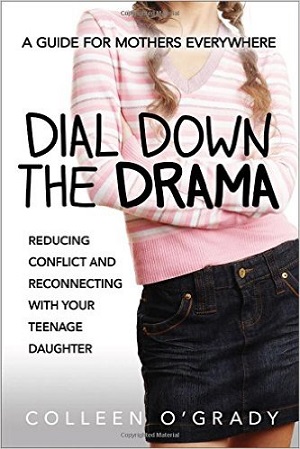 I think the main thing is to have other people read what you’re writing, and they’ll tell you if it’s good or not. It doesn’t mean that you don’t have something to say, it just means you haven’t written it yet. Most people, the feedback they get is, “Oh my God! This is so valuable,” or “Oh my God! I wish I had read this book 20 years ago.” I was counseling some writers the other day, and one of the women had written a book called: Dial Down the Drama: Reducing Conflict and Reconnecting with Your Teenage Daughter--A Guide for Mothers Everywhere. She is a woman who was a child psychologist, and she was working with lots of, I think, 20,000 teenagers, but when her daughter hit 12, it was like “Uh-oh”. Now she’s in it, right? So, she negotiated those teenage years. Her daughter is now 20, and she wrote a book based on her experience. The only people who are going to be interested in that book are going to be mothers with daughters, but that’s a lot of people. You may be someone who had a special needs child, and you had to learn how to negotiate the educational system. That’s a valuable message. You may be a meditation teacher, but you’re only going to attract a certain kind of person. Maybe they’re Christians, maybe they’re Buddhists, maybe they’re teenagers that are getting off drugs, but everybody has a group that will resonate with your message. You have to believe that. Also, don’t compare yourself to someone who has a universal message, like the Dalai Lama, Tony Robbins, Lisa Nichols, The Secret. You know, we’re not all meant to be billion dollar bestsellers, but we’re all meant to get our message out there and be bestsellers in certain categories, for sure.
I think the main thing is to have other people read what you’re writing, and they’ll tell you if it’s good or not. It doesn’t mean that you don’t have something to say, it just means you haven’t written it yet. Most people, the feedback they get is, “Oh my God! This is so valuable,” or “Oh my God! I wish I had read this book 20 years ago.” I was counseling some writers the other day, and one of the women had written a book called: Dial Down the Drama: Reducing Conflict and Reconnecting with Your Teenage Daughter--A Guide for Mothers Everywhere. She is a woman who was a child psychologist, and she was working with lots of, I think, 20,000 teenagers, but when her daughter hit 12, it was like “Uh-oh”. Now she’s in it, right? So, she negotiated those teenage years. Her daughter is now 20, and she wrote a book based on her experience. The only people who are going to be interested in that book are going to be mothers with daughters, but that’s a lot of people. You may be someone who had a special needs child, and you had to learn how to negotiate the educational system. That’s a valuable message. You may be a meditation teacher, but you’re only going to attract a certain kind of person. Maybe they’re Christians, maybe they’re Buddhists, maybe they’re teenagers that are getting off drugs, but everybody has a group that will resonate with your message. You have to believe that. Also, don’t compare yourself to someone who has a universal message, like the Dalai Lama, Tony Robbins, Lisa Nichols, The Secret. You know, we’re not all meant to be billion dollar bestsellers, but we’re all meant to get our message out there and be bestsellers in certain categories, for sure. The Path to Feeling Worthy
First of all, you can’t feel worthy or unworthy. You feel mad, sad, glad, and scared. That’s it. What you think is that you’re unworthy. So really, you have to address your thoughts. Self-esteem comes from the Latin word “aestimare”, which means to estimate. We either estimate that we’re good or we estimate that we’re bad. It is a thought. It is a thought that most of us picked up either from our parents telling us, “You’ll never amount to anything,” or “You’re a bad kid,” or we made a decision because we got rejected by our girlfriend, we didn’t make the debate team, we didn’t get into Harvard, you know, whatever. Then, we tell ourselves, “I’m not okay,” or “I’m bad.”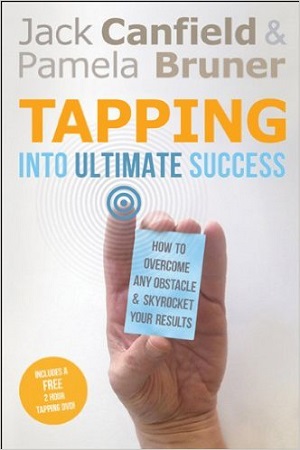 You know, maybe you had an abortion when you were 16 and now you’re judging yourself as a bad person, but that’s you making a judgement. The fact is that you can simply replace that thought with another better-feeling thought. So, it’s a matter of repetition. Thoughts are things we think, and we can change them or replace them through repetition. I don’t know if you’re familiar with EFT tapping, where you tap on these 9 acupuncture points while you think your negative, limiting belief. Literally, you can disappear a limiting belief. I’ve seen people do it in 10 minutes or less, using tapping. I wrote a book called Tapping Into Ultimate Success about tapping with a tapping expert. You can go on YouTube and type in “tapping”, and there’s like 5,000 free YouTube videos teaching you how to tap. But, the main thing is that it is a choice. You do not have to suffer with low self-esteem anymore because it is simply a thought that can be replaced with another thought through repetition, through tapping, through self-hypnosis; there are a number of things you can do.
You know, maybe you had an abortion when you were 16 and now you’re judging yourself as a bad person, but that’s you making a judgement. The fact is that you can simply replace that thought with another better-feeling thought. So, it’s a matter of repetition. Thoughts are things we think, and we can change them or replace them through repetition. I don’t know if you’re familiar with EFT tapping, where you tap on these 9 acupuncture points while you think your negative, limiting belief. Literally, you can disappear a limiting belief. I’ve seen people do it in 10 minutes or less, using tapping. I wrote a book called Tapping Into Ultimate Success about tapping with a tapping expert. You can go on YouTube and type in “tapping”, and there’s like 5,000 free YouTube videos teaching you how to tap. But, the main thing is that it is a choice. You do not have to suffer with low self-esteem anymore because it is simply a thought that can be replaced with another thought through repetition, through tapping, through self-hypnosis; there are a number of things you can do. Bestseller Mindset: Write the Book
Well, I think it’s simply, you have to write the book. And, part of the mindset has to be, “I’m going to do whatever it takes to make it good.” That’s where I really am a big believer in feedback. I know one couple who wrote a business book, and they invited 15 people to come to their apartment in Aspen. Every morning they had to read a chapter and give them feedback, and in the afternoon, the other people went skiing, and they edited the chapter based on the feedback. The next morning, they did another chapter. What we did was send our stories to our 40-reader panel. Urban, rural, black, white, brown, Asian, old, young, conservative, liberal, independent. You know, trying to get a really universal feedback thing. Most people are afraid to put it out because they are afraid of what they’re going to hear. Treat everything as a first draft. Just get words on paper, and then you can go back yourself and edit it, like, a week or two later, when you’ve got some distance. Then, give it to people and let them bleed all over it. You’re not in school, you’re not going to get a grade, you’re not going to fail. You’re just going to get feedback. “Here’s where I’m confused,” “You said this in another chapter,” “I don’t know what you mean here.” You know, that’s how you make it better. The guys who wrote The One Minute Manager, they would take their book, print 5,000 copies, sell them for cost to all of their clients, get feedback, and only then would they rewrite it and send it to a publisher. You’ve got to be committed to doing the work, and again, your message is worth the work because once it gets out there, it’s going to last forever. We all have life lessons that someone coming along behind us can benefit from. Whether it’s an 80-page book or a 500-page book, it doesn’t really matter. What matters is getting your message out there. I think another thing you have to deal with, in terms of a bestseller mindset, is you’ve got to get over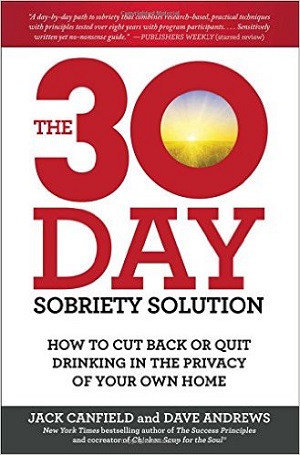 your fear of rejection because you’re going to get rejected by editors that are going to acquire your book, the publishers. You’re going to be rejected by people who won’t have you on their podcast. You are going to have people read your book and give you critical reviews. But, you’re going to reach so many more people. I just did a book called The 30-Day Sobriety Solution. It came out in January. It’s got 95 reviews on Amazon. Ninety-three of them are five-star reviews, and three of them are one-star reviews. So, you’re always going to have people that are going to go, “This doesn’t work. These guys are full of it.” You’ve got to develop a thick skin. Your message isn’t for everybody. You know, if I had a message for fundamentalist Christians, that might turn off the New-Agers living in San Francisco. If I had a new age message, it might turn people off, you know, going to Joel Osteen’s church in Texas. So, you’re not going to please everybody, and you just have to confront that. Get over that fear. Really spend time on getting a great title. You know, the “Chicken Soup for the Soul” title came in a meditation. Originally, we got rejected by a lot of people, but that title is now a brand worth almost a billion dollars. You know, there’s “Chicken Soup for the Soul” cat food and dog food. It’s ridiculous what has happened with that, and we actually won a brand management award in Asia for the best brand in books and so forth. I was counseling some people that were writing a book, and it was about how to avoid your children, declaring you incompetent and assigning you to an insane asylum so that they can take your wealth. They had some big, legalistic title that nobody would pay any attention to. We ended up with, “How to Protect Yourself from Your Own Children in Old Age”. So, people are like, “Stop. What is that? I want to know what that is.” Really invest in a good title. Sometimes you might have to pay a consultant to brainstorm with you. Your book is going to be sitting on a table somewhere, or spine out on a shelf. You want something that’s going to grab you. We did a lot of research on titles. You can actually muscle test titles. Put covers of a book in front of somebody and have them muscle test it. If they go weak when you push down their arm, when they’re looking at your book, they won't but it. They will look at that cover, and they won’t know why they didn’t buy it, but they won’t buy it. We had a guy that had a book called Dumpster Diving for Wealth. People were throwing away valuable things in their dumpsters, and the cover was a guy’s butt sticking out of a dumpster. Everyone we tested with that cover went weak. When we took the guy out of the dumpster and had him standing next to it with something valuable, everyone tested strong. Nobody wanted their face in a garbage bin, basically. So, there are a lot of tricks like that you can learn along the way. You’re sending a message to people emotionally, and you don’t even know you’re doing it. That’s, I think, a critical piece of it too. Another thing is to set big goals. You’ve got to dream big. Set a big goal. We set a goal to sell a million and a half books in a year and a half, and our publisher laughed at us. He said, “You’ll be lucky to sell 20,000.” We said, “No. We’re going to visualize it. We’re going to affirm it.” We put mock New York Times headlines all around our office. You know, “Chicken Soup for the Soul Sells 1.5 Million”. We made up fake bestseller lists with our book #1 in the New York Times. Now you can do it on your computer, but then we did it with whiteout, back in 1993. You have to have that big dream, and then visualize it. We used to visualize bookstore windows where the whole window was filled with Chicken Soup books, just like you see them when the new Harry Potter book comes out. Well, three years later there were bookstores with whole windows full of Chicken Soup books. People underestimate visualization. See, you want to live in that dream as if it’s already true. This is basic “Law of Attraction 101”, but it works.
your fear of rejection because you’re going to get rejected by editors that are going to acquire your book, the publishers. You’re going to be rejected by people who won’t have you on their podcast. You are going to have people read your book and give you critical reviews. But, you’re going to reach so many more people. I just did a book called The 30-Day Sobriety Solution. It came out in January. It’s got 95 reviews on Amazon. Ninety-three of them are five-star reviews, and three of them are one-star reviews. So, you’re always going to have people that are going to go, “This doesn’t work. These guys are full of it.” You’ve got to develop a thick skin. Your message isn’t for everybody. You know, if I had a message for fundamentalist Christians, that might turn off the New-Agers living in San Francisco. If I had a new age message, it might turn people off, you know, going to Joel Osteen’s church in Texas. So, you’re not going to please everybody, and you just have to confront that. Get over that fear. Really spend time on getting a great title. You know, the “Chicken Soup for the Soul” title came in a meditation. Originally, we got rejected by a lot of people, but that title is now a brand worth almost a billion dollars. You know, there’s “Chicken Soup for the Soul” cat food and dog food. It’s ridiculous what has happened with that, and we actually won a brand management award in Asia for the best brand in books and so forth. I was counseling some people that were writing a book, and it was about how to avoid your children, declaring you incompetent and assigning you to an insane asylum so that they can take your wealth. They had some big, legalistic title that nobody would pay any attention to. We ended up with, “How to Protect Yourself from Your Own Children in Old Age”. So, people are like, “Stop. What is that? I want to know what that is.” Really invest in a good title. Sometimes you might have to pay a consultant to brainstorm with you. Your book is going to be sitting on a table somewhere, or spine out on a shelf. You want something that’s going to grab you. We did a lot of research on titles. You can actually muscle test titles. Put covers of a book in front of somebody and have them muscle test it. If they go weak when you push down their arm, when they’re looking at your book, they won't but it. They will look at that cover, and they won’t know why they didn’t buy it, but they won’t buy it. We had a guy that had a book called Dumpster Diving for Wealth. People were throwing away valuable things in their dumpsters, and the cover was a guy’s butt sticking out of a dumpster. Everyone we tested with that cover went weak. When we took the guy out of the dumpster and had him standing next to it with something valuable, everyone tested strong. Nobody wanted their face in a garbage bin, basically. So, there are a lot of tricks like that you can learn along the way. You’re sending a message to people emotionally, and you don’t even know you’re doing it. That’s, I think, a critical piece of it too. Another thing is to set big goals. You’ve got to dream big. Set a big goal. We set a goal to sell a million and a half books in a year and a half, and our publisher laughed at us. He said, “You’ll be lucky to sell 20,000.” We said, “No. We’re going to visualize it. We’re going to affirm it.” We put mock New York Times headlines all around our office. You know, “Chicken Soup for the Soul Sells 1.5 Million”. We made up fake bestseller lists with our book #1 in the New York Times. Now you can do it on your computer, but then we did it with whiteout, back in 1993. You have to have that big dream, and then visualize it. We used to visualize bookstore windows where the whole window was filled with Chicken Soup books, just like you see them when the new Harry Potter book comes out. Well, three years later there were bookstores with whole windows full of Chicken Soup books. People underestimate visualization. See, you want to live in that dream as if it’s already true. This is basic “Law of Attraction 101”, but it works. Visualizing
There are two things that are important:- You want to have a vision board where you have some external images. For example, you sitting next to Oprah. You can Photoshop it. I just was on Super Soul Sunday in December; I had Oprah on my vision board for a year before that. I wanted to be on Super Soul Sunday, so I had that, and in September I get a call out of the blue. We weren’t even talking to our editors and producers. Images of a headline with how many books you’ve sold. Pictures of your books you can mock up. You can go on Fiverr and have someone for $5 make all kinds of images for you.
- Then, what you want to do is maybe have 3x5 cards, or index cards, with your affirmations. “I’m so happy and grateful that I’ve sold a million copies of Real Fast Writing,” or whatever it is. You read your affirmation with enthusiasm, close your eyes, and then visualize what you would see from inside your eyes as if you were looking out at the world, with some iconic image that says, “I’ve made it.” So, whether it’s the $1,000,000 check, the headline, your cover on Writer’s Digest. You know, Success Magazine or whatever it might be. Visualize that, and feel the feelings that you would feel if you already had that experience.
Additional Steps: Marketing
I have a handout that I give out at writer’s workshops called, “How to Market a Bestselling Book”. There are 37 steps, which we don’t have time for. Just some other steps that are important. Read books on marketing. John Kremer wrote a great book called 1,001 Ways to Market Your Books. Well, when we did Chicken, we took about 900 of those, that we thought were relevant, and made a Post-it for each one. I had two staff people writing them for days. We put them on a wall, about 12 feet long, and every day we took a Post-it off and did it. It took us two years to get through all those post-its, but by the end of that, we were #1 on the New York Times list and we stayed there for three years. Then, the second book came out, and it was #2. It was there for three years. At one point, we had #1, #2, and #3 on the New York Times list because we kept doing those things. I think hiring a media coach [is important] because most of us don’t know how to make good media; there are secrets to that. I’ll give you one. John Gray taught me this--the guy [who wrote] Men Are From Mars, Women Are From Venus. You talk about that your life’s going along at a certain level, then something bad happens. You have an accident, you get cancer, your daughter gets pregnant, you lose your job, bankruptcy happens, you lose your mortgage. Then you’re down in the pits, down here. Then you discover something that gets you out of the pit. My book, The Success Principles, may have helped you, and for someone else, it may have been a book on cancer, or nutrition, or how to eat holistically. Then, when you put that into action, not only did you get better, you got better than you were before. Now, you’re up here, and this thing you discovered is what my book is about, and it’s going to help you because you’re down here and you’re in the same situation. You don’t know what to do with your kid, you’re divorced, you’re laid off, you just got a new job as a manager and you don’t know what the hell you’re doing. That’s what my book will teach you to do. That little model will get you through any talk show, any podcast, and people will identify with you because they identify being down in that crater. I’ve got this great idea, and everyone tells me I should write a book. Now I’m depressed because I don’t know what to do. They discover you, and you help them get their book written. Now they’re up here, and they’re wealthy, and they’re on Oprah. So, it’s that kind of a thing, and you have to have your little success stories. You can tell them not just about your own life, but about all the people that you’ve helped so far with this methodology, technique, book, or whatever it might be.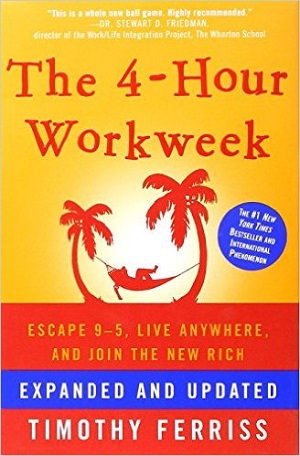 There are other points like, “How do you get on the covers of magazines,” and “How do you get in the airline magazines?” The world today is a podcast world. Tim Ferriss, who wrote The 4-Hour Work Week, understood that very quickly. Bloggers and Podcasters are the new book tour. So, you have to know how to play in that world and become one so that you have the respect of the other people. Tim started forwarding everyone’s blogs a year before his book came out. I actually mentored him in the writing of his book. He’s now far surpassed me in the marketing side for, you know, the younger generation. But, the reality is that you should study the people that have been successful. As Tony Robbins says, “Success leaves clues.” I’ve left clues. John Kremer is leaving clues. There are a lot of people who are bestsellers leaving clues. So study that. I watch an hour of Ted Talks, and podcasts, and YouTube videos every single day. There’s so much information out there that we have to be lifelong learners. Here’s a real cool thing one of my friends does. He does a three-minute video blog every single day. He was here in my house a couple of weeks ago. He was in the guest room, I thought, and I walk into my office, and he has his camera out, and he’s going, “I’m in Jack Canfield’s office, and if you’ll notice, there’s 3,000 books in here. Leaders are readers. Look at all of these books. You need to be reading. By the way, one of the books you need to read is…” And then he promoted some book. He does this sort of thing every single day. He went from having 600 people at his workshops to 800, to 1,000, every single day, all around the world. When I met him, he was making $140,000 a year. He makes over a million a year now. Again, he took a little course with me on how to be a bestseller, and then he applied this one technique better than anyone I know, and he’s got a huge following.
There are other points like, “How do you get on the covers of magazines,” and “How do you get in the airline magazines?” The world today is a podcast world. Tim Ferriss, who wrote The 4-Hour Work Week, understood that very quickly. Bloggers and Podcasters are the new book tour. So, you have to know how to play in that world and become one so that you have the respect of the other people. Tim started forwarding everyone’s blogs a year before his book came out. I actually mentored him in the writing of his book. He’s now far surpassed me in the marketing side for, you know, the younger generation. But, the reality is that you should study the people that have been successful. As Tony Robbins says, “Success leaves clues.” I’ve left clues. John Kremer is leaving clues. There are a lot of people who are bestsellers leaving clues. So study that. I watch an hour of Ted Talks, and podcasts, and YouTube videos every single day. There’s so much information out there that we have to be lifelong learners. Here’s a real cool thing one of my friends does. He does a three-minute video blog every single day. He was here in my house a couple of weeks ago. He was in the guest room, I thought, and I walk into my office, and he has his camera out, and he’s going, “I’m in Jack Canfield’s office, and if you’ll notice, there’s 3,000 books in here. Leaders are readers. Look at all of these books. You need to be reading. By the way, one of the books you need to read is…” And then he promoted some book. He does this sort of thing every single day. He went from having 600 people at his workshops to 800, to 1,000, every single day, all around the world. When I met him, he was making $140,000 a year. He makes over a million a year now. Again, he took a little course with me on how to be a bestseller, and then he applied this one technique better than anyone I know, and he’s got a huge following. Learning More From Jack
I just want to say one thing about the Bestseller Blueprint. I got together with Steve Harrison, and we, not only with myself, but with about 10 other bestsellers, we put together a course, literally from A-Z. The course teaches you everything you need to know about how to write the book, how to name the chapters so that they become hooks for the media, how to market the book, how to get on radio shows, how to get magazine interviews, etc. I mean, there’s so much in there. So, I really want to encourage people to check that out, and you can just go to BestsellerBlueprint.com. Go to JackCanfield.com for my workshops. I do two “Break Through to Success” seminars every year, and then we are doing some one-day workshops around the world. We have books, and tapes, and all of that good stuff. But, my parting line would be this: “You have everything you need to do everything you want. All you have to do is believe that and take action on that. And, if you follow the principles of taking action, responding to feedback, and continuing on and never giving up, you can achieve every goal you want in life. I’m proof of that, and there’s millions of people around the world that are proof of that.”Resources:
Some of Jack's Books: Chicken Soup for the Soul Chicken Soup for the Recovering Soul Chicken Soup for the Teen Soul Chicken Soup for the Cancer Patient Soul The Success Principles Tapping Into Ultimate Success Other Books Jack Mentioned: Dial Down the Drama: Reducing Conflict and Reconnecting with Your Teenage Daughter-- A Guide for Mothers Everywhere. The One Minute Manager Long Past Stopping 1,001 Ways to Market Your Books The 4-Hour Work Week Men Are From Mars, Women Are From VenusReal Fast Results Community
If you are diggin’ on this stuff and really love what we’re doing here at Real Fast Results, would you please do me a favor? Head on over to iTunes, and make sure that you subscribe to this show, download it, and rate & review it. That would be an awesome thing. Of course, we also want to know your results. Please share those results with us at http://www.realfastresults.com/results. As always, go make results happen!
Write for Entrepreneur.com, Fortune.com, Inc.com & Huffington Post to Establish Credibility & Build Your Email List With Lain Ehmann
0
Jul 22, 2016
 Welcome to yet another edition of the Real Fast Results podcast! Today you’ll have the chance to learn more about how you can further build your platform and your fan base as an author, speaker, content provider, coach, or even a consultant. No matter what it is that you do, it’s important for you to have a community of people that know, like, and trust you. People aren’t going to buy from you unless they have faith that you know what you are talking about and that you can help them. Something that you can do, in order to establish more credibility and a bigger audience base, is to start writing for major business-related publications, such as Entrepreneur.com, Inc.com, Huffington Post, etc. Today, our special guest is Lain Ehmann. Let’s see what she has to say.
Welcome to yet another edition of the Real Fast Results podcast! Today you’ll have the chance to learn more about how you can further build your platform and your fan base as an author, speaker, content provider, coach, or even a consultant. No matter what it is that you do, it’s important for you to have a community of people that know, like, and trust you. People aren’t going to buy from you unless they have faith that you know what you are talking about and that you can help them. Something that you can do, in order to establish more credibility and a bigger audience base, is to start writing for major business-related publications, such as Entrepreneur.com, Inc.com, Huffington Post, etc. Today, our special guest is Lain Ehmann. Let’s see what she has to say. Today's Promise: Stand Out To Editors
I would say that our promise today is to give you the best possible chance of getting a piece of your own submitted, and hopefully picked up, by the editors of these publications. We can’t guarantee anything because it’s in someone else’s hands, but we’ll help you cut through the masses and make your pitch or submission stand out to these editors.Authority Bling: Establishing Credibility
If you are a coach, a consultant, an author, a speaker, and you want to raise your visibility, you want to build your platform up higher, having that “seal of approval” from Entrepreneur.com, from Fortune, from Success, that helps establish you and helps your audience trust you. I call it “Authority Bling," when they go to your website and they see “As Seen on Huffington Post” or “As Seen on…” whatever the magazine would be for your particular industry. It conveys authority to you, based on the trust that the viewer might have with these other magazines. If you can say, “I’ve been on Oprah,” that right there is like your “Golden Ticket”. Also, you can bring in new viewers because if your piece is on one of these publications, websites, or print editions, people can find you that way as well. So, there’s a “double bang for your buck” there when you have that authority conveyed upon you. People will see that and come back to you. In my experience, the ones that I write for, do give you the opportunity to plug yourself in somehow, whether it’s saying “Bestselling Author of…” or “Find out more at…”.The Process Of Getting Published
The process of getting published now has never been easier; when we’re talking about getting published in a publication like Entrepreneur or Inc. When I started, I actually was a journalist for many, many years, before I established my online business, and before that time, you had to send in a pitch. You had to type it up on, sometimes a real typewriter, print it out, propose your article, send it to the editor in an envelope, with a self-addressed stamped envelope, and they usually would just say, “Not interested,” stick it back in and send it back to you. This was a process of 6, or 8, or 12 weeks, and it was excruciating! The idea now that I can email someone and get a response in a matter of minutes, sometimes, is just incredible. Also, they aren’t limited by the print publication. Most of the publications that we see now on the newsstand at Barnes & Noble, or we subscribe to in the mail, have print editions, but they also have unlimited space online. So, it’s so much easier now than it was 10 years ago. I just want to tell people that this is the Golden Age of being able to be published in these publications because they do need this endless stream of fresh content. I was a journalist. I established an online business. Now my specialty is in content strategy, particularly focusing on launch periods, so helping people gear up for launching a class, or product, or membership site, or whatever it might be. In order to provide more value to my clients, I wanted to get published in these magazines, so that I could tell them how to do it. Also, to raise my visibility as well.
published in a publication like Entrepreneur or Inc. When I started, I actually was a journalist for many, many years, before I established my online business, and before that time, you had to send in a pitch. You had to type it up on, sometimes a real typewriter, print it out, propose your article, send it to the editor in an envelope, with a self-addressed stamped envelope, and they usually would just say, “Not interested,” stick it back in and send it back to you. This was a process of 6, or 8, or 12 weeks, and it was excruciating! The idea now that I can email someone and get a response in a matter of minutes, sometimes, is just incredible. Also, they aren’t limited by the print publication. Most of the publications that we see now on the newsstand at Barnes & Noble, or we subscribe to in the mail, have print editions, but they also have unlimited space online. So, it’s so much easier now than it was 10 years ago. I just want to tell people that this is the Golden Age of being able to be published in these publications because they do need this endless stream of fresh content. I was a journalist. I established an online business. Now my specialty is in content strategy, particularly focusing on launch periods, so helping people gear up for launching a class, or product, or membership site, or whatever it might be. In order to provide more value to my clients, I wanted to get published in these magazines, so that I could tell them how to do it. Also, to raise my visibility as well. Step 1 - Referral
There are five steps, and I’m an author, so I love alliteration. The five steps all begin with “R." The first step is to get a referral if you can. Just like anything else, if you can get a referral, if you can get somebody’s name, that’s going to put you a step up. It’s not necessary, but just like with anything else in business, if you can open that door before you step through, it helps a little bit.Step 2 - Research
The second step is to do your research. This is a great opportunity, and you don’t want to just throw something at it to see if it sticks. You want to practice due diligence to make sure that you’re leveraging the opportunity correctly. That’s why I suggest that people do research. Know that if you’re in the business market, how Inc.com differs from Entrepreneur, differs from Fortune, differs from Forbes. How do those interact with each other? They each have their own angle. What is it? What kind of piece would belong in Entrepreneur versus Inc.? You look at them, and they look very similar, but there are nuances, and knowing that is really going to give you a step up.Step 3 - Relevant
After you’ve gotten a referral, if you can, and you’ve done a little research to know where you fit well and what the differences are among those publications, you want to make sure that you propose something that’s relevant to that publication. For instance, Business Insider is an online publication that’s pretty high-profile. They have a very specific spin on things, and something that would go in Business Insider probably would not appear in Fortune Magazine. Or, if it were the same topic, it would be a completely different angle. You want to make sure, if they cover from A-K in the alphabet, you don’t want to suggest something that is RST. You want to keep it within their area, and you want to make sure that what you propose is relevant to them and to their readers. What I suggest, also, is when you’re contacting them, you let them know that you have done your research, and you can even say, “I have a piece that’s similar to the piece that you published on [XXX Date], but it’s different because I took this angle on it.”Step 4 - Remarkable
That leads into the fourth “R”, which is remarkable. It’s got to be relevant, but it’s also got to be remarkable. You don’t want to propose something that they’ve already covered, and you don’t want to propose something that’s just “ho-hum”. You know, it’s just another article on “10 Ways to XYZ”. You want it to be very different. You want it to be remarkable in some way, but still relevant. Let’s say that you’re a triplet, and you’re in business with your siblings. That would be remarkable. Not only could you talk about how family dynamics work within the business world, or the entrepreneurial world, but how you would do that when you’re a triplet. That’s a little bit unusual, but I think it shows you what I’m talking about. You’re looking for a unique spin. You want to find something that only you could write about for whatever reason. There’s a really popular author who has written several books on what it’s like to be a doctor. He’s got a unique spin on it because he’s not just talking about the medical world from 10,000 feet. He’s talking about it like a guy who is actually talking about people. That’s just another example of finding a unique spin. What is the book, what is the article, what is the blog post? What is the one that only you can write and make yourself stand out that way?Step 5 - Respected
You have the referral, the research, making it relevant, making it remarkable, and then the fifth piece is to make sure that you present yourself as a respected expert. They want to know that you know what you’re talking about. When an editor gets an inquiry, or a pitch, or an email from you, whatever you want to call it, he or she knows, “Oh my gosh! Dan Hall has been in business for X number of years and has produced 16 different podcasts, and he’s interviewed people like this, this, and this.” He or she, reading that, already knows, “Hey, this guy knows what he’s talking about.” So if you see these as hurdles that you need to jump, it’s just one more. The question is going to be in their mind, “Okay, this is a great story, but does this person have the authority that our readers are going to want to see.” You’re going to position yourself that way. If you’re writing about business, you’re going to talk about how you’re experienced in the business. If you’re writing about health and fitness, you want to talk about that you ran a gym for ‘X number’ of years, or you’re a personal trainer, or you’re certified in whatever it might be. Again, you’re just showing your expertise.How To Get A Referral
 Ask People. If you’re in a mastermind group or some kind of networking group, ask people, “Hey, do you know anyone who has written for these publications,” or “Have you written for them,” or “Do you know anybody that works for this magazine,” or “Do you know anybody who has experience with publications?” The person you know might not know anything about it, but they might know someone who does. You know how interconnected we are now. Everyone is just a few steps away from everybody, so ask within your network about that. Find out who is working at that site via LinkedIn and see if there’s any connection that they have. LinkedIn shows you graphically. If you type in “Arianna Huffington,” it will tell you if you have connections with Arianna Huffington, and if so, how many steps are within the two of you. That is invaluable because you can actually see the connection. And, even if you don’t have a direct connection, maybe you have someone who works in advertising at Entrepreneur. You have to dig into it a little bit, but there’s always the connections there. You might have to take more steps between than someone else might have to, but they’re there. Also, a lot of journalists and editors are on Twitter. That seems to be their preferred social media platform. So, track them down and start to follow them and create your own connection. That’s always the best. I think if you could directly connect with this person, and they know who you are without a referral, that’s even better. There’s always ways to establish that.
Ask People. If you’re in a mastermind group or some kind of networking group, ask people, “Hey, do you know anyone who has written for these publications,” or “Have you written for them,” or “Do you know anybody that works for this magazine,” or “Do you know anybody who has experience with publications?” The person you know might not know anything about it, but they might know someone who does. You know how interconnected we are now. Everyone is just a few steps away from everybody, so ask within your network about that. Find out who is working at that site via LinkedIn and see if there’s any connection that they have. LinkedIn shows you graphically. If you type in “Arianna Huffington,” it will tell you if you have connections with Arianna Huffington, and if so, how many steps are within the two of you. That is invaluable because you can actually see the connection. And, even if you don’t have a direct connection, maybe you have someone who works in advertising at Entrepreneur. You have to dig into it a little bit, but there’s always the connections there. You might have to take more steps between than someone else might have to, but they’re there. Also, a lot of journalists and editors are on Twitter. That seems to be their preferred social media platform. So, track them down and start to follow them and create your own connection. That’s always the best. I think if you could directly connect with this person, and they know who you are without a referral, that’s even better. There’s always ways to establish that. Tips: Research And Relevant
I think that #2 and #3 really go together. The ‘research’ and the ‘relevant.' Based on the research, you’re going to figure out what’s relevant and what isn’t. It’s not complicated because you can go on their websites and see what’s there. Entrepreneur.com shows you the top 50 most popular posts. So ,you can see right there, not only what they’re covering, but what people are reading. They are going to want you to emulate exactly what their success formula is. If you know any post that is about financing gets a lot of views, and any post about business etiquette isn’t very popular, then you don’t want to submit the business etiquette piece, you want to submit the financing piece. That’s because you want them to say, “This is exactly what we use. This is exactly what I need.” It also helps a ton, when you are proposing your topics. I actually propose them as an article with a headline, and if I see that 9 out of the 10 top posts are, “16 Ways to,” or “14 Steps to,” or “6 People Who,” I propose them with a number. Or they all have a name of somebody important, or they all have to do with contrast. It’s like becoming a detective. You’re solving a puzzle, “What do these have in common?” And, “Can I do that similarly, yet pivot it a little bit?” Also, look at the sections that they have. Maybe they have a section on business start-ups. Maybe they have a section on relationships in the workplace. If it’s health and fitness, maybe there’s a section on weight loss, strength training, or whatever it might be. Look at how they set up their publication. The more they know about it, the more you can say, “This is going to fit here.” The more they are going to pay attention because a lot of people won’t go through that process. They will just blindly send the same piece to 40 different magazines. This is what distinguishes you as somebody that’s really serious about winning, about getting the assignment or having your material published. Some people have recommended sending in ideas. I have not gone that route. Throughout my career, I have had much more success by saying, “This is something that’s ready to go.” I’m confident in the research I’ve done, and the writing style. I know they publish pieces 500-600 words long, and I’m not sending them a 1,000-word piece. I’m looking at all of those things, so I know that it fits, and it’s so much easier for them to say, “Yes, I want that.” Instead, they would say “Okay, send it back in," and you go through this other loop of writing it. That just delays the whole process. I would rather have them give me a yes or no, and I’ll try again if it doesn’t fit. You should also understand that if they do say no, you still have a piece of brilliant content that you can use in any way. You can put it on your own blog. Maybe do a little tinkering and ship it to another site. So, it’s all about leveraging and thinking about re-purposing and repackaging if your first attempt doesn’t work out. That pretty much covers it. You just want to make sure that it fits within the scope of what they’re covering. That covers the relevance step too, because through your research you’ll see what they’re covering, how long their articles are, and the sections. Then, you can just make sure it fits. If you can’t figure out which section of their website your article would fit into, that would be a good indication that your article isn’t right for that publication. You should also try to make sure that the article you publish is relevant to your business. You don’t want to propose something that fits their site, but has very little to do with your business either. You will want to be able to benefit from someone reading your work and actually taking action on it. I could probably get something placed on a health and fitness website, but is that going to benefit my business? It possibly could, but I would be much better off spending that time and energy where my target market is hanging out and talking about the topic and the pain points of that target market versus just trying to write for anybody and everybody.
to figure out what’s relevant and what isn’t. It’s not complicated because you can go on their websites and see what’s there. Entrepreneur.com shows you the top 50 most popular posts. So ,you can see right there, not only what they’re covering, but what people are reading. They are going to want you to emulate exactly what their success formula is. If you know any post that is about financing gets a lot of views, and any post about business etiquette isn’t very popular, then you don’t want to submit the business etiquette piece, you want to submit the financing piece. That’s because you want them to say, “This is exactly what we use. This is exactly what I need.” It also helps a ton, when you are proposing your topics. I actually propose them as an article with a headline, and if I see that 9 out of the 10 top posts are, “16 Ways to,” or “14 Steps to,” or “6 People Who,” I propose them with a number. Or they all have a name of somebody important, or they all have to do with contrast. It’s like becoming a detective. You’re solving a puzzle, “What do these have in common?” And, “Can I do that similarly, yet pivot it a little bit?” Also, look at the sections that they have. Maybe they have a section on business start-ups. Maybe they have a section on relationships in the workplace. If it’s health and fitness, maybe there’s a section on weight loss, strength training, or whatever it might be. Look at how they set up their publication. The more they know about it, the more you can say, “This is going to fit here.” The more they are going to pay attention because a lot of people won’t go through that process. They will just blindly send the same piece to 40 different magazines. This is what distinguishes you as somebody that’s really serious about winning, about getting the assignment or having your material published. Some people have recommended sending in ideas. I have not gone that route. Throughout my career, I have had much more success by saying, “This is something that’s ready to go.” I’m confident in the research I’ve done, and the writing style. I know they publish pieces 500-600 words long, and I’m not sending them a 1,000-word piece. I’m looking at all of those things, so I know that it fits, and it’s so much easier for them to say, “Yes, I want that.” Instead, they would say “Okay, send it back in," and you go through this other loop of writing it. That just delays the whole process. I would rather have them give me a yes or no, and I’ll try again if it doesn’t fit. You should also understand that if they do say no, you still have a piece of brilliant content that you can use in any way. You can put it on your own blog. Maybe do a little tinkering and ship it to another site. So, it’s all about leveraging and thinking about re-purposing and repackaging if your first attempt doesn’t work out. That pretty much covers it. You just want to make sure that it fits within the scope of what they’re covering. That covers the relevance step too, because through your research you’ll see what they’re covering, how long their articles are, and the sections. Then, you can just make sure it fits. If you can’t figure out which section of their website your article would fit into, that would be a good indication that your article isn’t right for that publication. You should also try to make sure that the article you publish is relevant to your business. You don’t want to propose something that fits their site, but has very little to do with your business either. You will want to be able to benefit from someone reading your work and actually taking action on it. I could probably get something placed on a health and fitness website, but is that going to benefit my business? It possibly could, but I would be much better off spending that time and energy where my target market is hanging out and talking about the topic and the pain points of that target market versus just trying to write for anybody and everybody. How Can I Establish Myself as Someone Worth Listening to?
 One of the things that I’ve noticed, as I’ve worked with some of my clients to help them place articles, is that you can be a respected expert, but if you don’t have publishing experience as well, sometimes that is the missing piece. Just like I was saying, it’s like, “If I can’t get published in Entrepreneur, do I just give up?” No. Get published in a smaller magazine, or post it on your blog, because being able to say, “I have a blog, and I’ve written it for 16 years. I get 10,000 views per month,” or whatever it might be, it shows that you are a person of authority and established in terms of having this history behind you. The editors are going to go through a lot of effort to work with you and teach you how to submit to them, and once your piece is accepted, they get you into their content management system. They want to see stuff from you again. They don’t want the “one hit wonders”. They’ll take them because they do have a need for content, but I think they’re much more interested in establishing a relationship with someone that’s going to send them something every month or two. If you just come out of nowhere, give them one piece, and disappear, that’s okay, but they would much rather work with someone they know they can depend upon and develop that relationship. Showing that you have a history of publication, whether it’s in big names, or on your own blog. Just showing that you have that history of writing as well, will also help make you stand out from the crowd. I think they have limited expectations when it comes from wanting content from you on a regular basis. At this point in my career, none of the ones that I’ve written for so far have said, “We want a piece from you every week to stay in our system,” or anything like that. What I have seen, with both Huffington Post and Entrepreneur, I am now an approved writer for them, so I can put whatever I want, whenever I want into their content management system. If I have an idea today, I can have that in Entrepreneur’s system waiting to see. I asked the editor, “Do you want to see my ideas before I put them in?” He’s like, “No, once you’re accepted, just go ahead and put them in there.” That’s fantastic. That’s wonderful to have this opportunity and the door’s wide open. Other magazines do it differently. Success.com still wants to see an article idea, but now that I’ve had several pieces accepted by them, the door is definitely more open. You know, I get to use my key versus having to wait in line and that kind of thing as well. So, it differs from publication to publication. I know that Ramit Sethi, who is a very big name online, who does the Zero to Launch and I Will Teach You to be Rich, has a new site coming out. I can’t remember the name of it, but, I was talking to one of my clients, and they wanted a commitment to be one of their featured bloggers. You would have to provide X number of articles, in a certain format, over X period of time. So, it varies from publication to publication. It’s not an easy process, and it is going to take some time, but it is pretty straightforward. Just like anything else, if you’re willing to do that background research, it’s really going to set you apart from everybody else that’s not doing it. Just make sure it’s worth it for your business, and make sure it’s something that you’re not doing just for ego and really think that it’s going to benefit moving your business forward. There are so many opportunities for us to get our names out there. Make sure it matches your skills, and your interest, and your audience, and I think you’ll be good.
One of the things that I’ve noticed, as I’ve worked with some of my clients to help them place articles, is that you can be a respected expert, but if you don’t have publishing experience as well, sometimes that is the missing piece. Just like I was saying, it’s like, “If I can’t get published in Entrepreneur, do I just give up?” No. Get published in a smaller magazine, or post it on your blog, because being able to say, “I have a blog, and I’ve written it for 16 years. I get 10,000 views per month,” or whatever it might be, it shows that you are a person of authority and established in terms of having this history behind you. The editors are going to go through a lot of effort to work with you and teach you how to submit to them, and once your piece is accepted, they get you into their content management system. They want to see stuff from you again. They don’t want the “one hit wonders”. They’ll take them because they do have a need for content, but I think they’re much more interested in establishing a relationship with someone that’s going to send them something every month or two. If you just come out of nowhere, give them one piece, and disappear, that’s okay, but they would much rather work with someone they know they can depend upon and develop that relationship. Showing that you have a history of publication, whether it’s in big names, or on your own blog. Just showing that you have that history of writing as well, will also help make you stand out from the crowd. I think they have limited expectations when it comes from wanting content from you on a regular basis. At this point in my career, none of the ones that I’ve written for so far have said, “We want a piece from you every week to stay in our system,” or anything like that. What I have seen, with both Huffington Post and Entrepreneur, I am now an approved writer for them, so I can put whatever I want, whenever I want into their content management system. If I have an idea today, I can have that in Entrepreneur’s system waiting to see. I asked the editor, “Do you want to see my ideas before I put them in?” He’s like, “No, once you’re accepted, just go ahead and put them in there.” That’s fantastic. That’s wonderful to have this opportunity and the door’s wide open. Other magazines do it differently. Success.com still wants to see an article idea, but now that I’ve had several pieces accepted by them, the door is definitely more open. You know, I get to use my key versus having to wait in line and that kind of thing as well. So, it differs from publication to publication. I know that Ramit Sethi, who is a very big name online, who does the Zero to Launch and I Will Teach You to be Rich, has a new site coming out. I can’t remember the name of it, but, I was talking to one of my clients, and they wanted a commitment to be one of their featured bloggers. You would have to provide X number of articles, in a certain format, over X period of time. So, it varies from publication to publication. It’s not an easy process, and it is going to take some time, but it is pretty straightforward. Just like anything else, if you’re willing to do that background research, it’s really going to set you apart from everybody else that’s not doing it. Just make sure it’s worth it for your business, and make sure it’s something that you’re not doing just for ego and really think that it’s going to benefit moving your business forward. There are so many opportunities for us to get our names out there. Make sure it matches your skills, and your interest, and your audience, and I think you’ll be good. Check Out This Step By Step Video That Lain Originally Made For Me But Gave Me Permission To Post Here
[youtube https://www.youtube.com/watch?v=5w6oZBc0SAU?rel=0&showinfo=0&w=640&h=480]Connecting with Lain
The best way is through my blog. It’s Lainehmann.com. Then, on Facebook, it’s Facebook.com/LifeWithLain. On Twitter it’s @Lainehmann, and I use #FastLain.Resources
Publications: Entrepreneur.com Inc.com Huffington Post Business Insider Fortune.com SuccessReal Fast Results Community
If you are diggin’ on this stuff and really love what we’re doing here at Real Fast Results, would you please do me a favor? Head on over to iTunes, and make sure that you subscribe to this show, download it, and rate & review it. That would be an awesome thing. Of course, we also want to know your results. Please share those results with us at http://www.realfastresults.com/results. As always, go make results happen!
Jul 19, 2016
 Welcome to this addition of the Real Fast Results podcast! In many cases, this show provides information on how you can take digital assets and use them to pull in more revenue and build a bigger following for yourself. What you are going to learn today is going to feel counter-intuitive. Let’s see what guest Amy Collins has to share…
Welcome to this addition of the Real Fast Results podcast! In many cases, this show provides information on how you can take digital assets and use them to pull in more revenue and build a bigger following for yourself. What you are going to learn today is going to feel counter-intuitive. Let’s see what guest Amy Collins has to share… Today's Promise: Discover How Your eBooks and Print Books Make Money In The Library Market
Today we are going to discuss how your eBook and your print book can make you a great deal of money in the library market. It is counter-intuitive because people think that libraries are old fashioned and places people used to go. Not true. Libraries are where it’s at, and we can make a lot of money there. The Book Industry Study Group put out a study with Nielsen BookScan recently saying that avid readers, which is the type of consumers that book authors and publishers want to go for, avid readers visit libraries. Also, their households buy, on average, nine books a month. They're in libraries and they are buying nine books a month, on average; a lot of them buy more. With that, combined with the fact that a lot of libraries are in the United States, it’s the perfect place to focus your marketing and your sales efforts.Step 1 - Make Sure Your Book Belongs In A Library
The first “Big Picture” step is to make sure that your book belongs in a library. If you’ve written a mystery novel, a sci-fi novel, a cookbook, a self-help book, a business book, you belong in libraries. If you’ve written a journal, a coloring book, a word search, those probably aren’t good library books because libraries can’t take what we call consumables. Make sure that you have the kind of book that belongs in a library, and make sure it’s priced right. Is every other book in your genre $17.99 and yours is $24.99? Get your book in line with your competition. The next step, after that, is to get your book into the wholesalers.Step 2 - Get Your Book Into the Wholesalers
Libraries buy from wholesalers. Wholesalers are just big warehouses that will buy books from you, the author or publisher and turn around to resell them to libraries. The next step is to present your book to the librarians so that they can order the book from the wholesalers. My favorite step, the one after that, is when wholesalers pay you because the libraries have paid them, and then the libraries start reordering your book. So, make sure your book is ready for the library and that it belongs there, get your book into the wholesalers, the appropriate wholesalers. Pitch your book to the librarians, get them to put it on the shelves. Then wait for the sales to come rolling in. If your book does well in one library, other librarians are going to hear about it, and they are going to start ordering your book too. That’s the really cool thing about this because there is a sort of viral nature to the buying of books within the library system.Selling eBooks to Libraries
My favorite thing about selling eBooks to libraries is that you get to charge a lot of money for them. You may sell your eBook on Amazon for $8, $9, or maybe even $10. You can sell that same $9 eBook to a library for $30 or $40 because they are going to loan it out. They are going to loan your book out, over and over again, to their patrons, but only one at a time. I’m an avid reader in my library, and I’m always waiting for the next book. If the waiting list gets too long, they will license another eBook from you. So, all of the sudden, what was a $35 eBook becomes a $70 sale, all because your book did so well. Eventually, if you sell enough copies of your eBook, you then have the demand you need to start licensing them. That means you sell them, in essence, the right to loan out your eBook for one year, or for a certain number of loans. That means every year, you get more money because those loans are re-upped, those licenses are renewed. And yes, if you get your book into one library in Los Angeles, which has a $25 million dollar a year budget, and the other dozens and dozens of Los Angeles libraries can see how well your book is doing, they’re going to start ordering it. But, what if they see that you have an eBook? What if you told them that you have an eBook? All it takes is a simple email, and all of the sudden, you’ve doubled your sales. In some cases, you have tripled and quadrupled them.
your eBook on Amazon for $8, $9, or maybe even $10. You can sell that same $9 eBook to a library for $30 or $40 because they are going to loan it out. They are going to loan your book out, over and over again, to their patrons, but only one at a time. I’m an avid reader in my library, and I’m always waiting for the next book. If the waiting list gets too long, they will license another eBook from you. So, all of the sudden, what was a $35 eBook becomes a $70 sale, all because your book did so well. Eventually, if you sell enough copies of your eBook, you then have the demand you need to start licensing them. That means you sell them, in essence, the right to loan out your eBook for one year, or for a certain number of loans. That means every year, you get more money because those loans are re-upped, those licenses are renewed. And yes, if you get your book into one library in Los Angeles, which has a $25 million dollar a year budget, and the other dozens and dozens of Los Angeles libraries can see how well your book is doing, they’re going to start ordering it. But, what if they see that you have an eBook? What if you told them that you have an eBook? All it takes is a simple email, and all of the sudden, you’ve doubled your sales. In some cases, you have tripled and quadrupled them. How To Make Your Book Library Ready
 I know these steps intimately because we cover them in our course. I mean, these are the steps that we actually walk through in the course. However, when I said to make sure that your book is ready for libraries, there’s an entire list of things that your book should have. One of them is a catalogue and publication block. This is a block of information, of data, codes, numbers, and categories that all go into a small space that sits on the back of your title page, also known as the copyright page. If you would like to get into libraries, this chunk of data is very helpful because it shows the librarians that you mean business. That you understand their business and what they need from you in order to get your book into their system. When we say, “Make sure your book is ready,” there’s a long checklist of things you may not have actually heard of, and our course covers that. It’s the catalogue and publication block. We teach you how to price your book. What’s the right trim size? We’ve got an enormous discussion going on right now among all of our students about why 6x9 is not a great trim size for most books, not all, but for most. What you do is you get your book ready. If your book’s already printed and ready to go, you compare it to what the marketplace needs. You’ll learn these things in our course. When your book’s ready to go, registering with the wholesalers is as simple as writing a cover letter, sending them a copy of your book, with a marketing plan. Wholesalers want to know that you’re going to create demand. Are you going to be calling 40 libraries a week? Well, then tell them that. Are you going to be doing radio interviews or podcasts? Are you going to be writing guest posts as a blogger? If you tell the wholesaler what your marketing plan is, you have a much better chance of getting in there. The wholesalers are going to ask for a very deep discount. In some cases, this will be 50-60% off the price of your book. And, they are going to want to buy the returnable. If a wholesaler, such as Ingram Wholesale, Baker and Taylor Wholesale, Broder Wholesale, Bookazine buy 40 copies of your book, and only 20 sell, they are going to send you the other 20 back. So, you’re in the wholesalers now, you’ve agreed to their terms, they’ve ordered a few copies, and now it’s time to write your cover letter for the libraries. The cover letter does not focus on how wonderful you are or how terrific your book is. Although you probably are wonderful and your book is great, your letter is focused on what the librarians want to hear and what they need to know. What they need to know is that you understand their goals. If you approach a librarian and say, “Hey, I understand your goals, I know how hard your job is, and I’m here to make it easier,” you are so in. You want to create a cover letter, or start a communication email chain with them that says, “I know you want to create foot traffic. I know that you only want to bring in books that you need, the category is right for you, that your patrons are looking for. My book is exactly the kind of book that your patrons are looking for. How do I know that? Well, because I took this course and Amy told me that self-help books were #3 for non-fiction and cookbooks were #1. Well, my book is a self-help cookbook, so you clearly need my book. It’s priced perfectly, it’s got a category and publication block. It’s available at the following wholesalers. I also have an eBook available at the following eBook wholesalers.” I’ve been mentioning the print book wholesalers, but don’t forget the eBook wholesalers, like Overdrive and 3M. IngramSpark has a good one, or you can even use some of the eBook distributors like Bookbaby or Smashwords. So, once you’re in and once you’ve created that cover letter, and you start sending it out to emails, I suggest spending 15-20 minutes a day…that’s it…5 days a week, 20 minutes a day, for about 90 days, should really get you going, sending out this cover letter and tweaking it for each librarian.
I know these steps intimately because we cover them in our course. I mean, these are the steps that we actually walk through in the course. However, when I said to make sure that your book is ready for libraries, there’s an entire list of things that your book should have. One of them is a catalogue and publication block. This is a block of information, of data, codes, numbers, and categories that all go into a small space that sits on the back of your title page, also known as the copyright page. If you would like to get into libraries, this chunk of data is very helpful because it shows the librarians that you mean business. That you understand their business and what they need from you in order to get your book into their system. When we say, “Make sure your book is ready,” there’s a long checklist of things you may not have actually heard of, and our course covers that. It’s the catalogue and publication block. We teach you how to price your book. What’s the right trim size? We’ve got an enormous discussion going on right now among all of our students about why 6x9 is not a great trim size for most books, not all, but for most. What you do is you get your book ready. If your book’s already printed and ready to go, you compare it to what the marketplace needs. You’ll learn these things in our course. When your book’s ready to go, registering with the wholesalers is as simple as writing a cover letter, sending them a copy of your book, with a marketing plan. Wholesalers want to know that you’re going to create demand. Are you going to be calling 40 libraries a week? Well, then tell them that. Are you going to be doing radio interviews or podcasts? Are you going to be writing guest posts as a blogger? If you tell the wholesaler what your marketing plan is, you have a much better chance of getting in there. The wholesalers are going to ask for a very deep discount. In some cases, this will be 50-60% off the price of your book. And, they are going to want to buy the returnable. If a wholesaler, such as Ingram Wholesale, Baker and Taylor Wholesale, Broder Wholesale, Bookazine buy 40 copies of your book, and only 20 sell, they are going to send you the other 20 back. So, you’re in the wholesalers now, you’ve agreed to their terms, they’ve ordered a few copies, and now it’s time to write your cover letter for the libraries. The cover letter does not focus on how wonderful you are or how terrific your book is. Although you probably are wonderful and your book is great, your letter is focused on what the librarians want to hear and what they need to know. What they need to know is that you understand their goals. If you approach a librarian and say, “Hey, I understand your goals, I know how hard your job is, and I’m here to make it easier,” you are so in. You want to create a cover letter, or start a communication email chain with them that says, “I know you want to create foot traffic. I know that you only want to bring in books that you need, the category is right for you, that your patrons are looking for. My book is exactly the kind of book that your patrons are looking for. How do I know that? Well, because I took this course and Amy told me that self-help books were #3 for non-fiction and cookbooks were #1. Well, my book is a self-help cookbook, so you clearly need my book. It’s priced perfectly, it’s got a category and publication block. It’s available at the following wholesalers. I also have an eBook available at the following eBook wholesalers.” I’ve been mentioning the print book wholesalers, but don’t forget the eBook wholesalers, like Overdrive and 3M. IngramSpark has a good one, or you can even use some of the eBook distributors like Bookbaby or Smashwords. So, once you’re in and once you’ve created that cover letter, and you start sending it out to emails, I suggest spending 15-20 minutes a day…that’s it…5 days a week, 20 minutes a day, for about 90 days, should really get you going, sending out this cover letter and tweaking it for each librarian. Example Cover Letter
“Dear Susan, My name is Amy. I’ve written a book about the publishing industry. I’m hoping that you will consider stocking it on your shelves.” And then, you go on from there, “Here’s my marketing plan. Here’s what I know about your library. I would love to send you a copy as a PDF for you to review. May I send you a copy?” Just start with that.Communication With Librarians
Librarians are lovely. They are so nice. They are going to start communicating with you. As we get into the nitty- gritty on exactly how to do this, there’s also a long list of things not to do. You do not pick up the phone and call a librarian at noon on Saturday and expect them to give you half an hour. They aren’t going to. They are going to be annoyed; they’re busy. You do not call a school library and ask them to spend $400 on your book. They don’t know you, and they don’t have that kind of budget. School libraries are different than public libraries; they depend a lot on donations. If you really want to be focused on the school library market, that’s a slightly different cover letter. Again, we cover a lot of that in our course. What you want to do is to keep going after the libraries that want your book. You may hit a spade of libraries that aren’t interested because the category isn’t right for them. Yes, you have a self-help cookbook, and yes, that’s a huge market for libraries right now, in the print book world and the eBook world. But, what if that particular library system is just stuffed with self-help cookbooks? What if they don’t need anymore? That’s okay. There’s almost 13,000 public libraries in the United States. Go find others. Just start sending out your emails. Twenty minutes a day. You will eventually start enough conversations, and those orders will start coming in. Eventually, you will start seeing residual and viral sales. Things will start to snowball. Things will start to grow.
gritty on exactly how to do this, there’s also a long list of things not to do. You do not pick up the phone and call a librarian at noon on Saturday and expect them to give you half an hour. They aren’t going to. They are going to be annoyed; they’re busy. You do not call a school library and ask them to spend $400 on your book. They don’t know you, and they don’t have that kind of budget. School libraries are different than public libraries; they depend a lot on donations. If you really want to be focused on the school library market, that’s a slightly different cover letter. Again, we cover a lot of that in our course. What you want to do is to keep going after the libraries that want your book. You may hit a spade of libraries that aren’t interested because the category isn’t right for them. Yes, you have a self-help cookbook, and yes, that’s a huge market for libraries right now, in the print book world and the eBook world. But, what if that particular library system is just stuffed with self-help cookbooks? What if they don’t need anymore? That’s okay. There’s almost 13,000 public libraries in the United States. Go find others. Just start sending out your emails. Twenty minutes a day. You will eventually start enough conversations, and those orders will start coming in. Eventually, you will start seeing residual and viral sales. Things will start to snowball. Things will start to grow. Tips On Getting Into the Library Market
For those of you who would love to hit the library market, but you don’t have the time--I’ve always said, “When you need to sell a book…time, money, talent…pick any two.” If you’ve got time and money, but no talent, you can still be very successful. If you’ve got money and talent, but no time, you’re golden. If you don't have enough time, but you have a great book, you might want to consider using some of our advice and hiring someone to do this for you. Examples: a local college kid, your nephew, your grandson, etc. It should be someone that’s email friendly. You can hire a virtual assistant. I take out ads on Craigslist all the time. There are ways to hire somebody else to do this for you in a way that still is very profitable. Libraries are profitable enough that if you don’t have that 20 minutes a day, 5 days a week, maybe somebody else does. You should consider training someone how to do it. It is very transferable.Connecting With Amy
You can actually view the webinar about our library training. If you like what you’ve learned today, and you really want to get more into it, check that video out. I’m very, very proud of the work that Daniel Hall and I did on that. Also, if you need to reach me, I’m always reachable at Info@NewShelves.com or on my website, NewShelves.com. You don’t have to implement any of this, but if it resonates with you, then you should absolutely take the time and energy to actually start using what you’ve learned today.Daniels Real Fast Results Tips: Getting Into Libraries
You can watch a FREE on demand webinar called...
How to Sell & Rent Your Book to Libraries So You Can Grow Your Readership and Generate Passive Income
Watch it by clicking here.Resources:
Daniel And Amy's Course: Real Fast Library Marketing Wholesalers: Ingram Wholesale Baker and Taylor Wholesale Broder Wholesale BookazineReal Fast Results Community
If you are diggin’ on this stuff and really love what we’re doing here at Real Fast Results, would you please do me a favor? Head on over to iTunes, and make sure that you subscribe to this show, download it, and rate & review it. That would be an awesome thing. Of course, we also want to know your results. Please share those results with us at http://www.realfastresults.com/results. As always, go make results happen!
Using Negative Emotions to Get More Done and End Up Being a Happier Person Besides With Dr. Ed Daube
0
Jul 15, 2016
 Welcome to the Real Fast Results podcast! One of the things that this show is all about is helping you to see actual results in your business and in your life. There are a variety of potential obstacles that can impede you, or slow you down. Week to week, the episodes of this show provide you with specific steps on what you could do to help your business to grow. The shows are also meant to help you look inward and help you identify those characteristics of yourself which might actually be keeping you from having more success. You may be self-sabotaging. Or you may just have the breaks on in some aspects of your life or your business, and it’s keeping you from getting as much done as you would otherwise. Dr. Ed Daube is a psychologist who has a great grasp on not only the inner workings of people’s brains, but also how we can shift the paradigm of our minds slightly so that the negative aspects of our thoughts and emotions can actually help us to be even more productive. So, today’s interview is all about how to use negative emotions to get more done, faster and how to be a happier person besides. Introducing Dr. Ed Daube…
Welcome to the Real Fast Results podcast! One of the things that this show is all about is helping you to see actual results in your business and in your life. There are a variety of potential obstacles that can impede you, or slow you down. Week to week, the episodes of this show provide you with specific steps on what you could do to help your business to grow. The shows are also meant to help you look inward and help you identify those characteristics of yourself which might actually be keeping you from having more success. You may be self-sabotaging. Or you may just have the breaks on in some aspects of your life or your business, and it’s keeping you from getting as much done as you would otherwise. Dr. Ed Daube is a psychologist who has a great grasp on not only the inner workings of people’s brains, but also how we can shift the paradigm of our minds slightly so that the negative aspects of our thoughts and emotions can actually help us to be even more productive. So, today’s interview is all about how to use negative emotions to get more done, faster and how to be a happier person besides. Introducing Dr. Ed Daube… Emotions Are Positive Not Negative
I want you to understand that there’s no such thing as negative emotions. People label them as negative because of the results that they experience like, “Procrastination is negative because I don’t get things done.” In fact, all emotions are positive because they help us move forward. Let’s talk about procrastination.Procrastination And The Emotion It Causes
This is an excellent topic, and it’s an excellent topic because most people don’t get things done because they procrastinate. And when they procrastinate, they put things off. Take Real Fast Book as an example. The information given to people in that product is great, but people can’t use it because they are procrastinating. They are afraid to move forward. Before we get to that, you talk about negative emotions. We experience procrastination as putting things off, delaying, “I can’t get this done,” but underneath procrastination is the emotion of anxiety. Let me quickly say what emotions are. We have emotions because they alert us to threats in our environment and they prepare us to deal with those threats. That’s what emotions are. What anxiety is, it’s future-based emotions. We’re constantly scanning our surroundings, and we come across a threat, and then our anxiety tells us that there’s a threat. How do we use that? Well, when we feel anxious, that tells us we’re facing something. Usually, when we want to work on a book or a project at work, the threat is, “What if it doesn’t work out?” Or “What if it all goes to heck in a hand-basket and turns bad?” Then, when we ask that question “what if”, we then react, and this is the problem. We react to our anxiety as if that’s the only option available. If it were true that things were going to go to “heck in a hand-basket," then it would make sense to put it off, but it isn’t necessarily true. When we are aware of that, we can then turn our anxiety into anticipation, and use the energy or anticipation, which is a healthy energy, to move forward on the project. We get happy about moving forward, and we end up not only happy about what we’re doing, but finishing the project. That’s it in a nutshell; that’s the overview. We’ll go into more detail as we progress here.
underneath procrastination is the emotion of anxiety. Let me quickly say what emotions are. We have emotions because they alert us to threats in our environment and they prepare us to deal with those threats. That’s what emotions are. What anxiety is, it’s future-based emotions. We’re constantly scanning our surroundings, and we come across a threat, and then our anxiety tells us that there’s a threat. How do we use that? Well, when we feel anxious, that tells us we’re facing something. Usually, when we want to work on a book or a project at work, the threat is, “What if it doesn’t work out?” Or “What if it all goes to heck in a hand-basket and turns bad?” Then, when we ask that question “what if”, we then react, and this is the problem. We react to our anxiety as if that’s the only option available. If it were true that things were going to go to “heck in a hand-basket," then it would make sense to put it off, but it isn’t necessarily true. When we are aware of that, we can then turn our anxiety into anticipation, and use the energy or anticipation, which is a healthy energy, to move forward on the project. We get happy about moving forward, and we end up not only happy about what we’re doing, but finishing the project. That’s it in a nutshell; that’s the overview. We’ll go into more detail as we progress here. Example
It's about acknowledging a feeling and interpreting that feeling differently that we normally would. Let me give you a quick example. Look at the smoke detector in your house. It’s designed to alert you to the presence of a fire. When it does that, you then are prepared to get out of the house, follow through on your action plan, do whatever you need to do in case of a fire, and you’re protected. But, sometimes the smoke detector goes off in the middle of the night, or it goes off when you’ve burnt your toast. It’s the same smoke detector, but now the message is, “No. There’s no threat.” If you blame the smoke detector and you turn it off, or the battery is low and you don’t replace it, this could allow your house to burn down. Your emotion is like a smoke detector, it alerts you to possible threats, but it doesn’t always give you accurate information. For example, maybe your anxiety is telling you, “Okay, I’m avoiding doing my book. I’m anxious about that; I’m nervous… Maybe it’s because I haven’t done all of my preparation… Maybe it’s because I’m not ready to write yet because I need to do more work.” But, sometimes that anxiety will give you incorrect information, “There is no threat.” That’s where we turn it into anticipation and move forward.How To Overcome Anxiety Caused by Procrastination
When you find yourself procrastinating, putting things off, or you find yourself with writer’s block and you can’t move forward; the next step is to acknowledge, or validate, that you’re anxious. You don’t go with the flow here. You don’t react. You’re not going to move into a response mode. When you begin to feel that, your first question, and you’re asking it anyway, is “What if?” What if things go to heck in a hand-basket? That’s the question you’re asking yourself, and you need to recognize that. So now you can turn that around.Step 1 - Acknowledge the Emotion
 The first step, again, is to validate and recognize that you’re anxious, and you do that by the behavior that you’re engaging in. You’re procrastinating, and it’s telling you, “I’m anxious”. So, instead of saying, “What if it goes to heck in a hand-basket,” ask the question, “What if things go right,” and “What is it that I’m reacting to? What’s the threat that’s out there?” Usually, it’s something like, “Well, you know, if I write this book, what if people don’t like it? Or, what if it’s not everything I want it to say? Or, what if it doesn’t get all of the reviews that I want?” Okay, the next question is, “Yeah, what if… suppose it doesn’t, can I survive that? Can I survive the fact that people don’t like it? Yes, I can. Can I learn from it? Yes.” If I can survive the threat that’s keeping me from acting and causing me to procrastinate, then I no longer have to worry about it. I can move through it. So, if I can survive it, now the next question is, “Well, wait a minute… What if it goes well? What if people do like it? What if it’s well-received?” If it’s well received that’s exactly what I want, so now, there’s no longer any anxiety. I can anticipate the fact that it’s going to go well, and I can move forward. That’s how you turn it from anxiety into anticipation. You begin to question what it is that you are afraid of, can I survive it, and if I can, I don’t have to be afraid of it anymore. It may happen, and it may not. “Even if it does happen, I can survive it.” That’s the critical issue. I don’t have to be afraid of it anymore, and if I don’t have to be afraid of it, I don’t have to procrastinate and put it off. I can go after it and do what I have to do. So, Step #1 would be to acknowledge the emotion.
The first step, again, is to validate and recognize that you’re anxious, and you do that by the behavior that you’re engaging in. You’re procrastinating, and it’s telling you, “I’m anxious”. So, instead of saying, “What if it goes to heck in a hand-basket,” ask the question, “What if things go right,” and “What is it that I’m reacting to? What’s the threat that’s out there?” Usually, it’s something like, “Well, you know, if I write this book, what if people don’t like it? Or, what if it’s not everything I want it to say? Or, what if it doesn’t get all of the reviews that I want?” Okay, the next question is, “Yeah, what if… suppose it doesn’t, can I survive that? Can I survive the fact that people don’t like it? Yes, I can. Can I learn from it? Yes.” If I can survive the threat that’s keeping me from acting and causing me to procrastinate, then I no longer have to worry about it. I can move through it. So, if I can survive it, now the next question is, “Well, wait a minute… What if it goes well? What if people do like it? What if it’s well-received?” If it’s well received that’s exactly what I want, so now, there’s no longer any anxiety. I can anticipate the fact that it’s going to go well, and I can move forward. That’s how you turn it from anxiety into anticipation. You begin to question what it is that you are afraid of, can I survive it, and if I can, I don’t have to be afraid of it anymore. It may happen, and it may not. “Even if it does happen, I can survive it.” That’s the critical issue. I don’t have to be afraid of it anymore, and if I don’t have to be afraid of it, I don’t have to procrastinate and put it off. I can go after it and do what I have to do. So, Step #1 would be to acknowledge the emotion. Step 2 - Evaluate That Emotion
Step #2 would be to critically evaluate that emotion, and where it’s coming from, and whether or not you could survive it. What’s the worst case scenario, and whether or not you can survive that worst case scenario? Once you’ve kind of made that determination that what you’re doing isn’t going to lead to your demise, you can lip the coin and say, “This could turn out really good if I just keep going.” Anxiety, as an emotion, leads us to avoid the possible threat, and that energy moves us away from what we want to do. The flip side of anxiety, even though it’s the same energy and the same emotion, is anticipation. So, you’re not changing that emotion. You’re just flipping it to the other side. You’re using that same energy, but now that energy is pushing you towards what you want, instead of away from it. The other nice thing about this is if you have Googled “procrastination,” what you’ve likely been told is that you need to set goals. They need to be goals that you can do, and you need to go after it. None of that’s going to work if you don’t understand anxiety the way that it was just explained. What you are now empowered to do is take that energy, to recognize it, and to turn it around so that it now works for you and energizes you to move forward on whatever project it is that you’re facing. That’s the power of using your emotions as tools. It’s the same emotion; you’re just recognizing it and turning it from avoidance into approach and being energized by it. That’s the power of using emotions as tools. If you understand this, then you’ll now have a tool in your “tool bag” that you can use whenever a situation comes up that you’re avoiding. If there’s something that you’re not moving forward on, you now have the power in your hands, instead of reacting to the emotion and feeling un-empowered and unable to do anything about it. That’s the power of using emotions as tools and anxiety.
survive it. What’s the worst case scenario, and whether or not you can survive that worst case scenario? Once you’ve kind of made that determination that what you’re doing isn’t going to lead to your demise, you can lip the coin and say, “This could turn out really good if I just keep going.” Anxiety, as an emotion, leads us to avoid the possible threat, and that energy moves us away from what we want to do. The flip side of anxiety, even though it’s the same energy and the same emotion, is anticipation. So, you’re not changing that emotion. You’re just flipping it to the other side. You’re using that same energy, but now that energy is pushing you towards what you want, instead of away from it. The other nice thing about this is if you have Googled “procrastination,” what you’ve likely been told is that you need to set goals. They need to be goals that you can do, and you need to go after it. None of that’s going to work if you don’t understand anxiety the way that it was just explained. What you are now empowered to do is take that energy, to recognize it, and to turn it around so that it now works for you and energizes you to move forward on whatever project it is that you’re facing. That’s the power of using your emotions as tools. It’s the same emotion; you’re just recognizing it and turning it from avoidance into approach and being energized by it. That’s the power of using emotions as tools. If you understand this, then you’ll now have a tool in your “tool bag” that you can use whenever a situation comes up that you’re avoiding. If there’s something that you’re not moving forward on, you now have the power in your hands, instead of reacting to the emotion and feeling un-empowered and unable to do anything about it. That’s the power of using emotions as tools and anxiety. Step 3 - I Can Do This
 When you find yourself procrastinating, instead of saying, “I can’t do this,” you can say, “I can do this. I can move forward.” When you say, “I can move forward,” the next question is, “What do I need to do to do that?” It isn’t just the power of positive thinking, “I can do this, I can, I can, I can.” That’s nice, but it’s not enough. When you go from, “I have to avoid this, which is what my anxiety is telling me to… Wait a minute. My anxiety is telling me I can do this.”
When you find yourself procrastinating, instead of saying, “I can’t do this,” you can say, “I can do this. I can move forward.” When you say, “I can move forward,” the next question is, “What do I need to do to do that?” It isn’t just the power of positive thinking, “I can do this, I can, I can, I can.” That’s nice, but it’s not enough. When you go from, “I have to avoid this, which is what my anxiety is telling me to… Wait a minute. My anxiety is telling me I can do this.” Step 4 - What Do I Need To Do
Then, the next step is, “What do I need to do.” Now you can use all of the information that you’re taking in from this podcast. Now you can use that “how-to” because you’ll be energized to take advantage of the information, not only that you’re learning from Real Fast Results, but that’s out there in the books that you’ve read and so forth. You are now empowered to use that information.Take Action
You need to take action. You need to do whatever it is that you now realize is in front of you. You need to take action on the steps that you’ve laid out to get the job done. If you don’t take action, nothing gets done, no matter how prepared you are or how excited you are. The information is out there on the steps that you need to take. If you are writing a book, for example, you already know how to do that because this has been laid out for you, probably multiple times. The information is available, and now you need to take the steps, or the action on what you need to do. The steps are that once you’ve acknowledged your anxiety, because you are procrastinating, you need to ask, “Now, wait a minute, what’s the threat? What is it that I’m avoiding?” You answer that, and you can write it down, by the way. That’s a very powerful technique. Write down the answers to the questions you’re asking because then you can look at that piece of paper, and you can look at the threat that you’re avoiding, and you can then move to the next step of, “What if it goes right, and if it goes right, what do I need to do to make it happen?” Write those steps down and then act on those steps. Now what you’ve done is, you don't only have those steps in front of you of what you need to do, you’ve got your goals. You need to turn those steps into goals, and take action on those steps, and your book gets done, or whatever it is. You should have all of the information that you need to move forward, but you actually have to do it. Let’s say that it’s not writing a book that you’re avoiding. Maybe you’re afraid to ask your boss for a raise, or you’ve been avoiding the task of asking your spouse about finances. Maybe you’re thinking about talking to your kids about their friends. This solution applies to all of that. It’s the same process. Now, what you need to do is focus on the question of, “What if?” Think about, “What if things go well? What if my book is well-received? What if I ask for that raise and the boss says ‘yes’? What if I talk to my kid about their friends, and instead of him/her going up to their room and slamming the door, they say, ‘Well, yeah, I need to think about that…’?” When you focus on that, “What if,” that question itself, and the answer to it, is exciting because I can get excited about my book being well-received or about my boss giving me a raise. I can get excited about whatever it happens to be… talking to my spouse. When I get excited about that, I am motivated to move forward to get that job done. I can now sit down and ask, “What do I need to do? What’s my next step? What is the next step in the process? What haven’t I done? What do I need to prepare myself for in talking to my kids? What information do I need to have in talking to my boss when he asks me, ‘Well, why do you think you need a raise?’” It’s asking the question, “What if everything goes right?” Getting excited about it and focusing your attention on that, when you focus your attention on that, you’re then motivated to take the next step. That’s how it all fits together. What you’re doing is using anticipation, the anticipation of what good might happen, to actually propel you forward. You’re going to be motivated to take the next step in whatever process you’re working through because you’re anticipating good things happening. Allow yourself to be carried away with that emotion, whereas before being carried away by anxiety and the concern for the possible bad results that could come about. Now you’re allowing yourself to use that same energy and allowing yourself to get carried away by the positive results that you want and you can now make happen. It’s the same energy, except now you’ve turned it around and flipped it on its side so that it’s working for you as a tool, instead of against you.
on the steps that you’ve laid out to get the job done. If you don’t take action, nothing gets done, no matter how prepared you are or how excited you are. The information is out there on the steps that you need to take. If you are writing a book, for example, you already know how to do that because this has been laid out for you, probably multiple times. The information is available, and now you need to take the steps, or the action on what you need to do. The steps are that once you’ve acknowledged your anxiety, because you are procrastinating, you need to ask, “Now, wait a minute, what’s the threat? What is it that I’m avoiding?” You answer that, and you can write it down, by the way. That’s a very powerful technique. Write down the answers to the questions you’re asking because then you can look at that piece of paper, and you can look at the threat that you’re avoiding, and you can then move to the next step of, “What if it goes right, and if it goes right, what do I need to do to make it happen?” Write those steps down and then act on those steps. Now what you’ve done is, you don't only have those steps in front of you of what you need to do, you’ve got your goals. You need to turn those steps into goals, and take action on those steps, and your book gets done, or whatever it is. You should have all of the information that you need to move forward, but you actually have to do it. Let’s say that it’s not writing a book that you’re avoiding. Maybe you’re afraid to ask your boss for a raise, or you’ve been avoiding the task of asking your spouse about finances. Maybe you’re thinking about talking to your kids about their friends. This solution applies to all of that. It’s the same process. Now, what you need to do is focus on the question of, “What if?” Think about, “What if things go well? What if my book is well-received? What if I ask for that raise and the boss says ‘yes’? What if I talk to my kid about their friends, and instead of him/her going up to their room and slamming the door, they say, ‘Well, yeah, I need to think about that…’?” When you focus on that, “What if,” that question itself, and the answer to it, is exciting because I can get excited about my book being well-received or about my boss giving me a raise. I can get excited about whatever it happens to be… talking to my spouse. When I get excited about that, I am motivated to move forward to get that job done. I can now sit down and ask, “What do I need to do? What’s my next step? What is the next step in the process? What haven’t I done? What do I need to prepare myself for in talking to my kids? What information do I need to have in talking to my boss when he asks me, ‘Well, why do you think you need a raise?’” It’s asking the question, “What if everything goes right?” Getting excited about it and focusing your attention on that, when you focus your attention on that, you’re then motivated to take the next step. That’s how it all fits together. What you’re doing is using anticipation, the anticipation of what good might happen, to actually propel you forward. You’re going to be motivated to take the next step in whatever process you’re working through because you’re anticipating good things happening. Allow yourself to be carried away with that emotion, whereas before being carried away by anxiety and the concern for the possible bad results that could come about. Now you’re allowing yourself to use that same energy and allowing yourself to get carried away by the positive results that you want and you can now make happen. It’s the same energy, except now you’ve turned it around and flipped it on its side so that it’s working for you as a tool, instead of against you. Connecting With Dr. Daube
My email is TheEmotionsDoctor@gmail.com. My website and blog can be found at TheEmotionsDoctor.com. I post weekly entries about emotions there, and you can also leave comments. I’d love to hear from you. If you have any questions about emotions, go to my website and leave a comment or send me an email. I have a book out as well, and by the way, I procrastinated before I started that project. I used the exact same technique that I’ve just taught you in order to get my own book written. My book is called Emotions as Tools: A Self Help Guide to Controlling Your Life Not Your Feelings. It’s available on Amazon, but you can also go to my website and download the first chapter for free. I hope that you will do that. Real Fast Book helped me to write this book, and it also helped me to write my second book, which is Beyond Anger Management: Master Your Anger. This is a strategic tool that you can use, and the first chapter of this book is available on my website as well. Head on over there and check it out.Daniel's Real Fast Results Tip: Emotions
Resources
Dr. Daube's Books: Emotions as Tools: A Self Help Guide to Controlling Your Life Not Your Feelings Beyond Anger Management: Master Your AngerReal Fast Results Community
If you are diggin’ on this stuff and really love what we’re doing here at Real Fast Results, would you please do me a favor? Head on over to iTunes, and make sure that you subscribe to this show, download it, and rate & review it. That would be an awesome thing. Of course, we also want to know your results. Please share those results with us at http://www.realfastresults.com/results. As always, go make results happen!
Jul 12, 2016
 Welcome to Real Fast Results! This is Daniel Hall, and I’m very excited about this particular episode because I’m bringing on a guest who is going to be covering a topic that I am intensely interested in. His name is Stephen Key, and he is going to be going over the idea of licensing your ideas for passive income. That means selling your ideas to companies and making a royalty income from that. I have searched high and low for an expert to come on who is both very accomplished and willing to share their secrets. So, I am very appreciative that Stephen decided to join us today. Stephen, welcome to the show. Hopefully, the people reviewing this material will understand that they can take action as soon as today or tomorrow. What I will do is show you how to come up with simple ideas, show them to companies, and let them pay you for your creativity. You don’t have to build a business or spend a lot of money to do this.
Welcome to Real Fast Results! This is Daniel Hall, and I’m very excited about this particular episode because I’m bringing on a guest who is going to be covering a topic that I am intensely interested in. His name is Stephen Key, and he is going to be going over the idea of licensing your ideas for passive income. That means selling your ideas to companies and making a royalty income from that. I have searched high and low for an expert to come on who is both very accomplished and willing to share their secrets. So, I am very appreciative that Stephen decided to join us today. Stephen, welcome to the show. Hopefully, the people reviewing this material will understand that they can take action as soon as today or tomorrow. What I will do is show you how to come up with simple ideas, show them to companies, and let them pay you for your creativity. You don’t have to build a business or spend a lot of money to do this. The Benefits of Licensing Your Ideas
I believe that we are all creative, but a lot of us don’t want to start businesses. I admit that I'm not the business sort, but I'm very creative. So, what should I do with all of my ideas? Should I let them just sit in a corner? I feel I let them sit, sooner or later I'm going to see them out there on TV or on store shelves. The game has changed. You don’t have to start a company, or raise money, or quit your job. You don’t have to do anything that’s scary or dangerous. You can take some of your ideas, show them to the “right” companies, and you don’t even have to own it. That’s what surprises everyone. Everybody thinks that you have to have a patent. You don’t have to own anything; it’s all about speed to market. So, you just have to have the right idea and show it to a company. The big idea is that you can take intellectual property that you have developed, without having a patent for it, and bring it out to the marketplace and actually sell it so that you end up with money in your bank account. It doesn’t matter if you have a business or not. You’re not actually selling an idea but renting it. You’re just going to let these companies rent your idea for a while, and every quarter, you’re going to collect royalties from it. If you can make this work for you, this opportunity will allow you to live anywhere you want to, and you won’t have to work a 9-5 job. However, once you start doing this, you’re going to want to work on this all of the time. You can work anytime you want, live anywhere you want, and let the big companies do all of the work for you.
business sort, but I'm very creative. So, what should I do with all of my ideas? Should I let them just sit in a corner? I feel I let them sit, sooner or later I'm going to see them out there on TV or on store shelves. The game has changed. You don’t have to start a company, or raise money, or quit your job. You don’t have to do anything that’s scary or dangerous. You can take some of your ideas, show them to the “right” companies, and you don’t even have to own it. That’s what surprises everyone. Everybody thinks that you have to have a patent. You don’t have to own anything; it’s all about speed to market. So, you just have to have the right idea and show it to a company. The big idea is that you can take intellectual property that you have developed, without having a patent for it, and bring it out to the marketplace and actually sell it so that you end up with money in your bank account. It doesn’t matter if you have a business or not. You’re not actually selling an idea but renting it. You’re just going to let these companies rent your idea for a while, and every quarter, you’re going to collect royalties from it. If you can make this work for you, this opportunity will allow you to live anywhere you want to, and you won’t have to work a 9-5 job. However, once you start doing this, you’re going to want to work on this all of the time. You can work anytime you want, live anywhere you want, and let the big companies do all of the work for you. Steps To Licence Your Ideas For Passive Income
The first step is to see if you have a marketable idea. You need to find out fairly quickly, and the best way to do that is to just study the marketplace. What’s out there? I recommend doing a Google Image search. If you’ve got a new hammer, look at all the hammers in the world. You can do this at home. Spend a little time just playing around with the idea, and be an expert in a micro-category. Just sit, search, and see if you can find your “idea”. If you find that there’s something unique about your idea, move to the next step, which is to do a Google Patents search. That sounds very difficult, but all you do is go to Google Patents and type in a few words that hold similarities to your idea. Then just scour through what other people have done in that space. In order to create for the future, you must know what’s been done in the past. By looking at past patents, it gives you a glimpse of the past. If you’ve taken these first two steps, and you still think that your idea is unique, you’ll want to continue moving forward with it. Now, this doesn’t mean that you need to reinvent the wheel. You just need to be able to propose a small improvement, but one that no one else has seen. The smaller an idea, the better. Simple ideas is where it’s at, and for a few different reasons. First, if you make a bit of an improvement on an existing idea, then you know there’s a market for it already. Also, it’s likely that the manufacturing can be done because it’s already being done, but you’re making a small improvement. The third step in this process is to show a company your idea. It really is that simple. You do this with a one-page sell sheet. It’s basically just an advertisement. You know how you drive down a freeway, and when you see a billboard, you get it instantly? That’s all your sell sheet needs to be. It should have a big benefit on the top that tells the company what your idea does and why they should care, a picture pertaining to your idea, and then your contact information down at the bottom. Here’s how easy this is. Let’s say that you just have a sketch on a napkin. You can find a freelance designer on the Internet that does 3D computer generated graphics. This person would be able to take a simple sketch of yours and make it beautiful. They can make your idea come to life. It may not be real yet, but they can make it look real, and you can have that done for under $100. It’s important that you understand that the benefit statement that you use should let people know, at a glance, how your idea will make the buyer’s life better. It’s essentially just a benefit-driven headline. Once you have a sell sheet, you need to make a list of companies that could benefit from your idea. I call it follow the money. Who could benefit from my idea? Just go down to a retail store that you think it might sell in, and look at where it’s going to be on that isle. Those are the companies that you’re going to submit your idea to. The next step that you’ll need to take is to file a PPA (Provisional Patent Application). You can file it anywhere in the world and in the United States for $65. It gives you one year to shop around and show it to companies and put “patent pending” on it. Now, that $65 just gives you one year, but during this time, you can shop it around and see if anyone wants it. After you have that, then you can move forward and contact the company.To reiterate, here are your steps:
- Step 1: Check to make sure your brilliant idea is marketable.
- Check Google Images
- Check Google Patents.
- Step 2: Make a sell sheet to present to companies
- Benefit-driven headline
- Image that makes idea come to life
- Contact information
- Step 3: Make a list of companies to submit your idea to.
- Step 4: File a PPA
- Step 5: Submit Your Idea
Submitting Your Idea
 To submit your idea, I recommend that you go to LinkedIn and find a company that you want to send it to. Find someone in sales or someone in marketing. Tell them that you’re a product developer. Never tell people you are an inventor. Anyway, let them know that you would like to submit an idea to their company for them to review, and ask them what their process is. That’s all it takes to get up and running. This person is going to tell you what you need to do, and they may just respond with an email address, which is great because you can just send your sell sheet in electronically. If the company takes an interest in it, they will bring all of the right people in the room to look at it. Hopefully, at that point, they will pick up the phone or send you an email saying, “We want to know more.” Now you’re in the game. That’ when the magic happens. Either they will like it or they won’t. You’ll know very, very quickly whether you hit it big or not. If it’s a great idea, the company that you submitted it to would respond very fast in most situations. It’s when they call that things get a little trickier. It’s time to cut a deal. I recommend that you get someone with a little more experience to help you. If you’ve never done this before, find someone that’s done it, or find someone with a bit of legal expertise. You’re going to need some guidance at this point. Now they want it, and they are going to want to cut a deal. You want this deal to be cut in a way that you benefit best for your idea. This is so simple that anyone can do this at any age. I have been teaching people that are 18 and still in high school to do this and people in their 80’s to do this. Anyone can do this.
To submit your idea, I recommend that you go to LinkedIn and find a company that you want to send it to. Find someone in sales or someone in marketing. Tell them that you’re a product developer. Never tell people you are an inventor. Anyway, let them know that you would like to submit an idea to their company for them to review, and ask them what their process is. That’s all it takes to get up and running. This person is going to tell you what you need to do, and they may just respond with an email address, which is great because you can just send your sell sheet in electronically. If the company takes an interest in it, they will bring all of the right people in the room to look at it. Hopefully, at that point, they will pick up the phone or send you an email saying, “We want to know more.” Now you’re in the game. That’ when the magic happens. Either they will like it or they won’t. You’ll know very, very quickly whether you hit it big or not. If it’s a great idea, the company that you submitted it to would respond very fast in most situations. It’s when they call that things get a little trickier. It’s time to cut a deal. I recommend that you get someone with a little more experience to help you. If you’ve never done this before, find someone that’s done it, or find someone with a bit of legal expertise. You’re going to need some guidance at this point. Now they want it, and they are going to want to cut a deal. You want this deal to be cut in a way that you benefit best for your idea. This is so simple that anyone can do this at any age. I have been teaching people that are 18 and still in high school to do this and people in their 80’s to do this. Anyone can do this. Cutting A Deal
Exactly how you can go about cutting a deal with a company is beyond the scope of this particular discussion. However, here is a little insight. There will be a licensing agreement, and they are going to pay you a royalty on every one (use of your idea/product) that they sell. So, basically, you’re going to rent it to them. At this point, you can also get them to pay for the patent too. There are all sorts of things that you could potentially negotiate, but on the whole, they are going to rent it, they are going to sell it, they are going to pay you.Royalties - Example
Let me give you an example of one of the ideas I had. It was a little Nerf basketball goal. But, the backboard depicted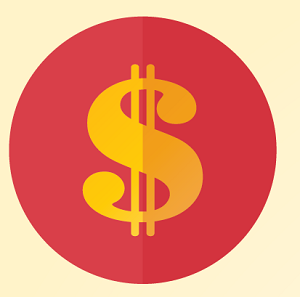 a picture of Michael Jordan, and it was in the shape of Jordan’s head and shoulders. This sold for 10 years, and I collected royalties on a prototype that probably cost maybe $10. The first year was $100,000 in royalties, and it continued to sell for 9 years after that. I sent the Michael Jordan basketball goal idea in on April 9, 1999, and had a contract on the 12th. So, I had a contract 3 days later. That’s how fast it went. They were already selling the square ones with a little picture of Michael Jordan on them. It was a split royalty. They paid Michael Jordan and they paid Stephen. In this case, Stephen’s cut was 2.5%. That’s not a very high royalty, even for a small idea. Usually, the average is 5-6% off of the wholesale price of the product. Every time the product was shipped for $4.99, I would get 2.5%. They made bigger ones and smaller ones, and they even made them with different basketball players. Another product of mine also sold for 10 years. The last check i got was for $0.55 and I kept it.
a picture of Michael Jordan, and it was in the shape of Jordan’s head and shoulders. This sold for 10 years, and I collected royalties on a prototype that probably cost maybe $10. The first year was $100,000 in royalties, and it continued to sell for 9 years after that. I sent the Michael Jordan basketball goal idea in on April 9, 1999, and had a contract on the 12th. So, I had a contract 3 days later. That’s how fast it went. They were already selling the square ones with a little picture of Michael Jordan on them. It was a split royalty. They paid Michael Jordan and they paid Stephen. In this case, Stephen’s cut was 2.5%. That’s not a very high royalty, even for a small idea. Usually, the average is 5-6% off of the wholesale price of the product. Every time the product was shipped for $4.99, I would get 2.5%. They made bigger ones and smaller ones, and they even made them with different basketball players. Another product of mine also sold for 10 years. The last check i got was for $0.55 and I kept it. More Tips On Licensing Products
The most important thing to understand is that you can do this. You don’t need to have a degree in product development or even a business of your own. All you need to do is have a love for products. Find a category that you’re fascinated with. If you like golf, stick with that. Look at golf products, study them, and think about what problems there are. That’s really the first step. It’s not hard. I like to teach people that they should try to be an expert in a micro-category. It may be something that you’re already in the business of. It’s even better if it’s related to something you’re already doing. One of my students was in the restaurant business, and he noticed that it was really hard to get the tomato paste out of the big cans that they used. He created a tool that allowed them to pull it all out at one time. You see? He knew the problem personally because he was in the business. He discovered there was a problem, created a mechanism to solve that problem, and then licensed the mechanism. Most people don’t even know that you can license ideas in the hospitality industry. This is a huge industry. Here are more industries that are on fire at the moment:- The Pet Industry
- The Kitchen Industry
- “As Seen on TV”*
- The Fitness Industry
- The Home Improvement Industry
Do I Have to Have a Brilliant Idea to Do This?
 You do not have to reinvent the wheel. Big ideas take a lot of money and time because you have to educate, and most likely, spend a lot of money to get it going. When you make simple improvements on existing ideas, the product is already selling and has already been proven. You’re just bringing the next addition out. They already have the marketplace established, so it’s speed to market. Here is an example of how simple this can be. I've got a water bottle with a label on it, and you could spin the label on the bottle and it would reveal more information from a little window on the back. In other words, the label is in two layers. When you spin the bottom of the bottle, new information would be shown through a little window on the top label. This could be used as a marketing device. This particular water bottle has a college team’s logo on it, and it was being used as a recruiting device. Imagine yourself at a football game, and you happen to spin the bottom of your bottle of water and realize that it does that, so you begin reading. Then you find out all sorts of things about what the university you were at offers. This is a sort of cool and clever idea, but all it really involves is an extra layer of the label on a water bottle. The best part is that this piggybacks on products that are already on the market. All I did was add a little value by making some use of, or a simple improvement to, the label that would have existed already. It delivers more content. You could use this for contests and all sorts of things. In fact, you basically double the label size this way, and a company can add more promotional materials, which makes the label all the more valuable to the company at hand. For this project, my one-line benefit statement was, “This label adds 75% more space.” If you had an idea like mine, you might begin by doing a Google Image search for, “Labels that add more information.” Then, I would just look at all of the images. I've seen labels that pull out like an accordion book. I might even go into someone’s website. I'd just search around for everything having to do with labels. I'd look up “expanded content labels”, and “labels that add more information”, and “labels that function”. I just start to become an expert in one little area. In this case, I looked at this and found retailers that sold different types of labels. Those would be the companies that I submitted it to. In other words, you could go to those who have something substantially similar, and that could be the first step in who to contact. Everybody thinks that you’re going after the competition. No, it’s your potential licensee. As you are researching the market, you’re also looking for potential licensees. The next thing that you would do is perform a search on Google Patents. I would type in the same thing as I did before, which would be things like “Labels that add more information”. Various patents involving these types of labels would come up, and I would search through them to make sure that I'm not copying anyone else’s patented idea. Then I would search through the manufacturers that came up in this search as well. Again, when you do this for a day or so, you begin to become sort of an expert in a very narrow category. If you do this and you start to think that you have a marketable idea that would work, that’s when you begin to make plans to put together your sell sheet. You might even decide to make a YouTube video about your ideas. YouTube videos are very powerful, and one that you make for something like this shouldn’t be more than about one minute long. All you need to do is demonstrate a problem and how your idea could be the solution. For example, if you wanted to sell the label idea spoken about before, you could show a person that was frustrated because there wasn’t enough information about something on his label. Then, you could show that person happy because he found a bottle that gave him all the information he was looking for. If you made a YouTube video and a sell sheet, you could add a URL to your sales sheet that people could click on to see a demo of your idea. Since you studied the marketplace and made a list of companies, you have done all of the work. You have a video, a sell sheet, and a list of companies to send the sheet out to. That’s when you’ll want to file your PPA (Provisional Patent Application). At that point, you’ll have one year to shop it around before you have to file a non-provisional, which would be a patent. You can file a PPA anywhere in the world, yourself, for basically $65. If you are in a higher income bracket, it might cost $120. Either way, it’s very affordable. The sell sheet that you make would need a good image. A 3D, computer-generated graphic might run you $50-$70. That, along with the cost of your PPA shouldn’t exceed more than about $200, and yet, you’ve created a package that could potentially be worth hundreds of thousands of dollars. I'm amazed at how many ideas I have seen that were truly remarkable, but they take forever because they aren’t simple. People try to reinvent the wheel and have to educate people about their idea. On the other hand, I've seen small improvements on products get licensed all of the time. In fact, I see licensing agreements almost every other week. The people that are getting these contracts are using my 10-step system, and five of these steps you learned about today. It’s really quite easy to put together the marketing material, create a list, make a sales sheet, and reach out to a company. These are all steps that people can follow and complete both quickly and inexpensively. I have even taught people in other countries how to do this, and they end up feeding ideas to United States companies. You can do this from just about anywhere. Speaking of doing this inexpensively, there are people offering to do 3D renderings on Fiverr each and every day at a very low cost. It’s incredible how much skill people have today and what little they charge for them. There was a time that something like this would have cost thousands of dollars, and now you can have this sort of thing done for as little as $10. It’s just incredible. One of the points that I want to get across is that you need to reach out to everyone that you can, and if you get a “no”, don’t let it deter you. Keep trying. I recommend contacting at least 25 different companies, and all at the same time. Don’t wait to hear back from one. Right now, you might be thinking, “Well, what if there are two different companies that want it?” I usually respond to this question with, “What a great problem to have!” This could potentially cause a bidding war for your idea. By the way, there’s one industry that you would not want to contact more than one person at a time with, and that’s DRTV (Direct Response TV, otherwise known as “As Seen on TV”). It’s a very small community, so contact them one at a time. There are only five or six players in that community anyway, and you’ll want to contact each of them one at a time. When it comes to everyone else, however, you’ll want to contact as many people as possible. Keep good notes, and even if you get a “no”, you might get a “yes” next time. Act professionally and ask for feedback. Maybe you can resubmit it, or maybe you can tweak the idea a bit before submitting it to the next company. Everything is based on relationships, and if you submit another one before you know it, they’ll start to tell you what they are looking for. That’s golden because if you know what people want, you’re in a much better position to provide it. This definitely gives you an advantage, and they realize that you are working for free for them; that is, until they take it and rent it from you. You’re an asset. They want these calls, and they are really going to love you. When they finally say, “We want to talk more,” you’re going to fall out of your chair. This gives me goose bumps to this day. That’s when you’ll know that you’re really in the game. Again, anyone can do this. The steps are easy, and you’ve been given all of the advice that you need to get started today. The only thing that hasn’t been discussed much at this point is the contract. I can talk all day about how to cut these deals, but there note enough time during this interview. However, here are ways to cut deals that you get it every time.
You do not have to reinvent the wheel. Big ideas take a lot of money and time because you have to educate, and most likely, spend a lot of money to get it going. When you make simple improvements on existing ideas, the product is already selling and has already been proven. You’re just bringing the next addition out. They already have the marketplace established, so it’s speed to market. Here is an example of how simple this can be. I've got a water bottle with a label on it, and you could spin the label on the bottle and it would reveal more information from a little window on the back. In other words, the label is in two layers. When you spin the bottom of the bottle, new information would be shown through a little window on the top label. This could be used as a marketing device. This particular water bottle has a college team’s logo on it, and it was being used as a recruiting device. Imagine yourself at a football game, and you happen to spin the bottom of your bottle of water and realize that it does that, so you begin reading. Then you find out all sorts of things about what the university you were at offers. This is a sort of cool and clever idea, but all it really involves is an extra layer of the label on a water bottle. The best part is that this piggybacks on products that are already on the market. All I did was add a little value by making some use of, or a simple improvement to, the label that would have existed already. It delivers more content. You could use this for contests and all sorts of things. In fact, you basically double the label size this way, and a company can add more promotional materials, which makes the label all the more valuable to the company at hand. For this project, my one-line benefit statement was, “This label adds 75% more space.” If you had an idea like mine, you might begin by doing a Google Image search for, “Labels that add more information.” Then, I would just look at all of the images. I've seen labels that pull out like an accordion book. I might even go into someone’s website. I'd just search around for everything having to do with labels. I'd look up “expanded content labels”, and “labels that add more information”, and “labels that function”. I just start to become an expert in one little area. In this case, I looked at this and found retailers that sold different types of labels. Those would be the companies that I submitted it to. In other words, you could go to those who have something substantially similar, and that could be the first step in who to contact. Everybody thinks that you’re going after the competition. No, it’s your potential licensee. As you are researching the market, you’re also looking for potential licensees. The next thing that you would do is perform a search on Google Patents. I would type in the same thing as I did before, which would be things like “Labels that add more information”. Various patents involving these types of labels would come up, and I would search through them to make sure that I'm not copying anyone else’s patented idea. Then I would search through the manufacturers that came up in this search as well. Again, when you do this for a day or so, you begin to become sort of an expert in a very narrow category. If you do this and you start to think that you have a marketable idea that would work, that’s when you begin to make plans to put together your sell sheet. You might even decide to make a YouTube video about your ideas. YouTube videos are very powerful, and one that you make for something like this shouldn’t be more than about one minute long. All you need to do is demonstrate a problem and how your idea could be the solution. For example, if you wanted to sell the label idea spoken about before, you could show a person that was frustrated because there wasn’t enough information about something on his label. Then, you could show that person happy because he found a bottle that gave him all the information he was looking for. If you made a YouTube video and a sell sheet, you could add a URL to your sales sheet that people could click on to see a demo of your idea. Since you studied the marketplace and made a list of companies, you have done all of the work. You have a video, a sell sheet, and a list of companies to send the sheet out to. That’s when you’ll want to file your PPA (Provisional Patent Application). At that point, you’ll have one year to shop it around before you have to file a non-provisional, which would be a patent. You can file a PPA anywhere in the world, yourself, for basically $65. If you are in a higher income bracket, it might cost $120. Either way, it’s very affordable. The sell sheet that you make would need a good image. A 3D, computer-generated graphic might run you $50-$70. That, along with the cost of your PPA shouldn’t exceed more than about $200, and yet, you’ve created a package that could potentially be worth hundreds of thousands of dollars. I'm amazed at how many ideas I have seen that were truly remarkable, but they take forever because they aren’t simple. People try to reinvent the wheel and have to educate people about their idea. On the other hand, I've seen small improvements on products get licensed all of the time. In fact, I see licensing agreements almost every other week. The people that are getting these contracts are using my 10-step system, and five of these steps you learned about today. It’s really quite easy to put together the marketing material, create a list, make a sales sheet, and reach out to a company. These are all steps that people can follow and complete both quickly and inexpensively. I have even taught people in other countries how to do this, and they end up feeding ideas to United States companies. You can do this from just about anywhere. Speaking of doing this inexpensively, there are people offering to do 3D renderings on Fiverr each and every day at a very low cost. It’s incredible how much skill people have today and what little they charge for them. There was a time that something like this would have cost thousands of dollars, and now you can have this sort of thing done for as little as $10. It’s just incredible. One of the points that I want to get across is that you need to reach out to everyone that you can, and if you get a “no”, don’t let it deter you. Keep trying. I recommend contacting at least 25 different companies, and all at the same time. Don’t wait to hear back from one. Right now, you might be thinking, “Well, what if there are two different companies that want it?” I usually respond to this question with, “What a great problem to have!” This could potentially cause a bidding war for your idea. By the way, there’s one industry that you would not want to contact more than one person at a time with, and that’s DRTV (Direct Response TV, otherwise known as “As Seen on TV”). It’s a very small community, so contact them one at a time. There are only five or six players in that community anyway, and you’ll want to contact each of them one at a time. When it comes to everyone else, however, you’ll want to contact as many people as possible. Keep good notes, and even if you get a “no”, you might get a “yes” next time. Act professionally and ask for feedback. Maybe you can resubmit it, or maybe you can tweak the idea a bit before submitting it to the next company. Everything is based on relationships, and if you submit another one before you know it, they’ll start to tell you what they are looking for. That’s golden because if you know what people want, you’re in a much better position to provide it. This definitely gives you an advantage, and they realize that you are working for free for them; that is, until they take it and rent it from you. You’re an asset. They want these calls, and they are really going to love you. When they finally say, “We want to talk more,” you’re going to fall out of your chair. This gives me goose bumps to this day. That’s when you’ll know that you’re really in the game. Again, anyone can do this. The steps are easy, and you’ve been given all of the advice that you need to get started today. The only thing that hasn’t been discussed much at this point is the contract. I can talk all day about how to cut these deals, but there note enough time during this interview. However, here are ways to cut deals that you get it every time. How To Get A Deal
There’s one way to get a deal every single time. It’s all about taking away fear. When a company sees your idea, they want to license your PPA. They want to license that number. They want to license your concept. It comes down to what you are granting and what they are licensing. In their mind, they need something tangible. I always tells these companies, “We’re going to make improvements.” That’s because they are; they always do. That sounds really simple, but they always say yes. It’s good business. The company will tell me, “You’re right Steve; you’re going to make improvements. We’re going to make improvements, and we need to add it to the contract.” Now, what happens when they do that? When your idea is patent-pending, you’re going to ask for a certain royalty. That may be 5%, for example. Then you make the agreement that when your idea goes to patent, you’ll be paid 7%. At the same time, make the agreement that if it doesn’t issue at all, they pay you at least 1% for your efforts. Doing it this way takes away all of the fear from that company. They are always worried about owning something. I don't believe that you own anything, ever. Products go in and out of the market so quickly today that your product might go through its life cycle before a patent can even get issued. It’s not about patents. It’s about selling. So, the way you do these deals is you just take away the risk for these companies. During your negotiations, you tell the companies that you speak with, “If it issues pay me [this], and pay me [this] if it doesn’t.” Since you opened up the grant of license, you can always file another PPA to get paid the 5%. That may seem a little complex. I have written a book on this topic alone. These are the deals that I see happening every day because you take away the risk and you give the companies three different opportunities, and all along, you play the patent game. Even more importantly, the patent game doesn’t play you this way. This is something that’s a bit hard for many people to grasp, but it’s not that complicated if you sit down and think about it for a while. What happens is when your product lands on a company’s desk, the CEO may look at it and say, “Hey, I like this, but let me bring my team in.” He shows it to the sales guy, and the sales guy goes, “Hey, I can sell this.” Then, they go to the marketing person, and he says, “I can market this product because it has a great benefit.” They bring the manufacturing guy in, and he goes, “This is an improvement on our existing ideas, so we can make this.” Finally, they bring the legal guy in, and he asks, “Well, does he own anything?” This makes everyone in the room start to think, and they say, “We don’t know. Take a look at his Provisional Patent Application.” That’s when the legal guy asks, “Well, will he get a patent,” and everyone goes, “I don’t know”. You see, no one knows; this is the gray area. You’re playing the unknowns. This opens the doors for you to say, “I know it is speed to market, and I know it’s not about protection. It’s about selling. So, let’s just go sell it now.” Why wait for a patent to issue when it might not even issue? Even if it does issue, by then it may be too late. So, you play that game of the unknown, and that way, when you work the contract, you can keep that gray area open and a little vague by adding new intellectual properties that keeps that patent pending as long as you like. At the same time, you are minimizing their risk because you’re telling them that if it doesn’t go to patent, my royalties will be basically nothing. It makes them very happy, in fact, because you’ve countered everything that could possibly happen. Again, it’s really about selling. It’s not about protection. I have seen tons of licensing agreements in my lifetime, in 99% of them, no one owns anything. A lot of the time, people don’t like to hear that. Patent attorneys don’t want to hear that, for example, because they want to sell you the patent. They want to sell you that process of filing a patent. I want everyone to know, that’s not what I'm seeing. I see these agreements probably every other week, and I've been seeing this for 15 years. It’s not about fear, or being an expert, or anything like that. It’s really about getting into the game today. If you’re creative, you don’t need to have a background. All you need is one simple idea. It's always a numbers game in anything you do in life. You can start one business and pour all of your money and energy into it. In four or five years, you may have become a substantial success, and you may not have. With this, you may have 20 or 30 ideas in a year, and you can just put all of those bowls out there. Essentially, you’ll have all of these companies working for you and you’ve increased your chances tenfold. On top of that, you were not the one to take the risk.
idea, they want to license your PPA. They want to license that number. They want to license your concept. It comes down to what you are granting and what they are licensing. In their mind, they need something tangible. I always tells these companies, “We’re going to make improvements.” That’s because they are; they always do. That sounds really simple, but they always say yes. It’s good business. The company will tell me, “You’re right Steve; you’re going to make improvements. We’re going to make improvements, and we need to add it to the contract.” Now, what happens when they do that? When your idea is patent-pending, you’re going to ask for a certain royalty. That may be 5%, for example. Then you make the agreement that when your idea goes to patent, you’ll be paid 7%. At the same time, make the agreement that if it doesn’t issue at all, they pay you at least 1% for your efforts. Doing it this way takes away all of the fear from that company. They are always worried about owning something. I don't believe that you own anything, ever. Products go in and out of the market so quickly today that your product might go through its life cycle before a patent can even get issued. It’s not about patents. It’s about selling. So, the way you do these deals is you just take away the risk for these companies. During your negotiations, you tell the companies that you speak with, “If it issues pay me [this], and pay me [this] if it doesn’t.” Since you opened up the grant of license, you can always file another PPA to get paid the 5%. That may seem a little complex. I have written a book on this topic alone. These are the deals that I see happening every day because you take away the risk and you give the companies three different opportunities, and all along, you play the patent game. Even more importantly, the patent game doesn’t play you this way. This is something that’s a bit hard for many people to grasp, but it’s not that complicated if you sit down and think about it for a while. What happens is when your product lands on a company’s desk, the CEO may look at it and say, “Hey, I like this, but let me bring my team in.” He shows it to the sales guy, and the sales guy goes, “Hey, I can sell this.” Then, they go to the marketing person, and he says, “I can market this product because it has a great benefit.” They bring the manufacturing guy in, and he goes, “This is an improvement on our existing ideas, so we can make this.” Finally, they bring the legal guy in, and he asks, “Well, does he own anything?” This makes everyone in the room start to think, and they say, “We don’t know. Take a look at his Provisional Patent Application.” That’s when the legal guy asks, “Well, will he get a patent,” and everyone goes, “I don’t know”. You see, no one knows; this is the gray area. You’re playing the unknowns. This opens the doors for you to say, “I know it is speed to market, and I know it’s not about protection. It’s about selling. So, let’s just go sell it now.” Why wait for a patent to issue when it might not even issue? Even if it does issue, by then it may be too late. So, you play that game of the unknown, and that way, when you work the contract, you can keep that gray area open and a little vague by adding new intellectual properties that keeps that patent pending as long as you like. At the same time, you are minimizing their risk because you’re telling them that if it doesn’t go to patent, my royalties will be basically nothing. It makes them very happy, in fact, because you’ve countered everything that could possibly happen. Again, it’s really about selling. It’s not about protection. I have seen tons of licensing agreements in my lifetime, in 99% of them, no one owns anything. A lot of the time, people don’t like to hear that. Patent attorneys don’t want to hear that, for example, because they want to sell you the patent. They want to sell you that process of filing a patent. I want everyone to know, that’s not what I'm seeing. I see these agreements probably every other week, and I've been seeing this for 15 years. It’s not about fear, or being an expert, or anything like that. It’s really about getting into the game today. If you’re creative, you don’t need to have a background. All you need is one simple idea. It's always a numbers game in anything you do in life. You can start one business and pour all of your money and energy into it. In four or five years, you may have become a substantial success, and you may not have. With this, you may have 20 or 30 ideas in a year, and you can just put all of those bowls out there. Essentially, you’ll have all of these companies working for you and you’ve increased your chances tenfold. On top of that, you were not the one to take the risk. Licensing Your Products Vs. Selling Products Through Amazon FBA
I have a lot of students that do both. Personally, I don't want to have any skin in the game, at least not financially. Plus, I know that I don't have the time to manage something like this, and have no interest in doing so anyway. At the same time, I do like to have multiple products out in the marketplace, and I like to have several different balls up in the air at any given time. I like that what I'm doing carries no risk at all. This is something that’s very easy to do, and I have done the other. I have managed a company before, and have had my own employees. It’s complicated because you have to watch all of the time and stay aware of the market swings. All of that stuff is someone else’s problem when you’re just licensing your ideas. It’s not that this is any better than any other business model, really. It’s just another way to play the game. I personally think you should play the game in all sorts of different ways. So, it’s not a matter of one being better than the other; it comes down to how you want to spend your time. If you’re a really creative person, and you want to find something that can build great wealth, then you need to find something that has a multiplying effect. Licensing your ideas does this.Connecting With Stephen
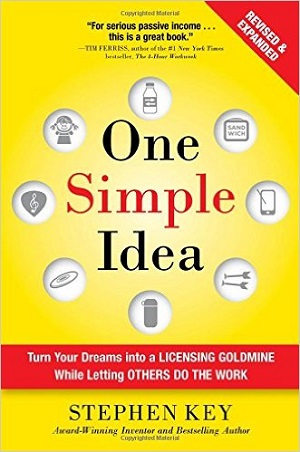 The 10 steps that were partly outlined are completely outlined in a book called One Simple Idea. You can find it on Amazon, and it’s been selling there for over five years. It has also been translated into five different languages (learn more about selling foreign language rights to your books). I call this book your “road map” for pursuing this type of business. I also have a YouTube channel called “inventRightTV”. My partner Andrew Krauss and I produce two YouTube videos every week, and each one is on the 10-step process that you’ve been introduced to today. Last but not least, I also write for three online magazines, on a weekly basis. They are:
The 10 steps that were partly outlined are completely outlined in a book called One Simple Idea. You can find it on Amazon, and it’s been selling there for over five years. It has also been translated into five different languages (learn more about selling foreign language rights to your books). I call this book your “road map” for pursuing this type of business. I also have a YouTube channel called “inventRightTV”. My partner Andrew Krauss and I produce two YouTube videos every week, and each one is on the 10-step process that you’ve been introduced to today. Last but not least, I also write for three online magazines, on a weekly basis. They are: Daniel's Real Fast Result Tip: Passive Income
I agree with all that Stephen has discussed today. I firmly believe that we should all seek out a business model that supports our lifestyle and gives us the kind of time freedom that we need. This particular model is right in the cross-hairs of that goal. That’s one of the reasons why I just love the idea of all of this. So, go out and make it happen!Resources
Stephen's Book - One Simple Idea Google Image Search - https://images.google.com/ Google Patents - https://patents.google.com/ Finding 3D Artists - https://www.fiverr.com/ Selling Foreign Language Rights To Your BooksReal Fast Results Community
If you are diggin’ on this stuff and really love what we’re doing here at Real Fast Results, would you please do me a favor? Head on over to iTunes, and make sure that you subscribe to this show, download it, and rate & review it. That would be an awesome thing. Of course, we also want to know your results. Please share those results with us at http://www.realfastresults.com/results. As always, go make results happen!
Jul 7, 2016

Welcome to this edition of the Real Fast Results Podcast! If you are an author, or want to be an author, or even if you have a book or physical product on Amazon, you are going to want to read over what we have for you today. Debbie Drum is a content production expert. Not only has she produced and published many books, but she also takes action when it comes to marketing her business. In this session, Debbie is going to share her secrets on how to get more and better reviews for your products, specifically on Amazon.com. This training will focus on getting book reviews, but the information found herein will not only apply to books. Debbie, thank you for taking the time to be on the show today.
Today's Promise: More Amazon Book Reviews
The big promise for you is to simply get more book reviews because the equation is “More Book Reviews = More Sales”. While there are many ways to go about getting book reviews, there are more effective ways than others, and we are going to be outlining those ways today. You definitely want to keep cracking away and taking action because if you keep at it, you know, that’s what made me where I am today. I never quit. Every single day I wake up doing, doing, doing…failing…succeeding. That’s what it’s all about.A Bit About Debbie
I started internet marketing in 2010 by literally Googling the words, “How to make money online”. It all started from there. The very first week that I started making money was actually with publishing. I was working a full-time job, and I was traveling a lot--in sales. I have a sales background. I was working and publishing a book a week. I loved it so much because that’s where I was seeing real results. And, the sales person, of course, came out and said, “Hey, I’ve got to teach people what I am doing.” So, that’s a little bit about how I got started.The Process of Getting More Book Reviews
Basically, the big picture, and the “Why” behind this is having more reviews is essentially like having an army of people selling your book 24/7, 365 days out of the year with you being hands-off. They never sleep. Reviews stay there forever. The more reviews you have, and obviously the more positive reviews you have, will work in your favor for more people to click that “buy” button. The reason is that we live in a very social world. I don’t have to tell you that. Everything is about, “Well, what are other people saying?” If I’m going to dedicate the next 2 hours to reading a book, or if I’m going to dedicate a day buying a Groupon package, I’m going to see what other people are saying. It’s our job as the product creators, as the marketers, as the authors to get those reviews because it’s not going to happen quick enough naturally. One of the quickest and most effective ways that I have found to get reviews is to look at people who are already reviewing other books in my niche. The thing is that you want to be publishing in niches where there are tons of competitors because that means it’s a market that has buyers. So, don’t be scared if you see other books that have thousands of reviews and thousands of sales because that means you’re on the right path to finding money. What you want to do is go into Amazon and make a list of the top 50 books that compete against your book, or are in the same niche, the same genre, as your book. There are some books that you will find, if you’re in the right niches, that have thousands of reviewers, or hundreds of reviewers even. Those are the people that I have found throughout the past six years of doing this that I call influencers. Those people, they want to share cool things with their friends. They want to be savvy, they want to be “in the know”, and that’s how they want to be seen. A lot of these people will review books, especially the ones in your niche. Sometimes they have Facebook groups where one message can reach 2,000 or 3,000 people at a click. Those are the kind of people that we are finding, and striving to find, inside of Amazon.
people selling your book 24/7, 365 days out of the year with you being hands-off. They never sleep. Reviews stay there forever. The more reviews you have, and obviously the more positive reviews you have, will work in your favor for more people to click that “buy” button. The reason is that we live in a very social world. I don’t have to tell you that. Everything is about, “Well, what are other people saying?” If I’m going to dedicate the next 2 hours to reading a book, or if I’m going to dedicate a day buying a Groupon package, I’m going to see what other people are saying. It’s our job as the product creators, as the marketers, as the authors to get those reviews because it’s not going to happen quick enough naturally. One of the quickest and most effective ways that I have found to get reviews is to look at people who are already reviewing other books in my niche. The thing is that you want to be publishing in niches where there are tons of competitors because that means it’s a market that has buyers. So, don’t be scared if you see other books that have thousands of reviews and thousands of sales because that means you’re on the right path to finding money. What you want to do is go into Amazon and make a list of the top 50 books that compete against your book, or are in the same niche, the same genre, as your book. There are some books that you will find, if you’re in the right niches, that have thousands of reviewers, or hundreds of reviewers even. Those are the people that I have found throughout the past six years of doing this that I call influencers. Those people, they want to share cool things with their friends. They want to be savvy, they want to be “in the know”, and that’s how they want to be seen. A lot of these people will review books, especially the ones in your niche. Sometimes they have Facebook groups where one message can reach 2,000 or 3,000 people at a click. Those are the kind of people that we are finding, and striving to find, inside of Amazon. How to find book reviewers:
- Figure out what books in your niche have a lot of reviews.
- Then, go and identify reviewers of those books. It’s highly likely that if they like a book on a similar topic, or even the same topic, they would want to review your book as well.
- Third, the reviewers themselves are influence centers, or potential influence centers. That’s a very cool thing because if they like your work, and they like your book, then you’ve basically got social proof, and you’ve got a built-in third-party endorsement that’s completely unbiased. These folks are basically grading you on the work itself. You know, they get nothing out of it, essentially. Other than they’re feeding their community, and they want to be seen as somebody that is “in the know”, or is on the cutting edge of whatever that topic is.
Contacting Potential Book Reviewers
 Once you’ve found your book--let’s say this book has 1,000 reviewers. There’s a hyperlink on that number of reviews. Inside of Amazon, you want to click inside of that hyperlink, and it brings you to a page where you can see about 10-15 reviewers per page. Depending on how many reviews they have, there’s page after page of all these reviews. Each individual reviewer has a profile page. You can click on their name to find their profile page. What you will find is that a certain percentage of these people will actually have contact information. So, it’s not 100% of the people, unfortunately for us. Every one of us, as buyers on Amazon, we all have a profile page whether we like it or not. And, it’s up to us to say whether or not we want to show our contact information, meaning our website and/or our email address. After about six years of this, after our research, it has been proven that about 10-15% of the reviewers of a certain book will have contact information on their profile pages. This is an amazing opportunity to contact the specific people that we need to target and contact to review our book. However, it turns out that this is a very manual process. I learned this very quickly. Back in 2012, I was trying to figure out different ways to get reviewers, as opposed to asking my dad and my mom, and asking Aunt Cindy, and asking my best friend. And, I’m glad that I did this because, you as authors, you might be realizing that Amazon is actually taking away reviews because of these connections that they’re finding. You definitely don’t want the same person, like your group of author community, to be reviewing all of your books because that will raise red flags inside of Amazon. A lot of the time, people provide their contact information because they are interested in reviewing other people’s work, or at least there’s a stronger probability that they are. The benefit that they get out of it is sharing cool things, which we have already talked about, and #2 is getting a free book, which a lot of people are after too. There’s a whole business of this, you know, with physical products. People are looking to get free products for reviews. This is very important: As long as you are contacting people and asking for honest reviews, honest feedback, that is staying within Amazon’s terms of service. What you don’t want to do is say, “Hey, can you give me a five-star review?” That’s not going to fly, and a lot of these reviewers are savvy, and they know what’s right and what’s wrong when it comes to this. You definitely do not want to purchase reviews! When you contact people, don’t say that you’ll give them any type of compensation. All they are getting is a free copy of your book. Amazon is trying to create an atmosphere that makes for a wonderful experience for people. They don’t want their buying atmosphere being filled with fake reviews because people will stop trusting their marketplace. That’s something, as you probably can imagine, Amazon takes very seriously. Amazon is even going as far as suing third parties over fake reviews. So, somehow they’re figuring it out. With all of their algorithms they can do it. If you go to Fiverr.com, you’ll see people who are willing and able to review your book for $5. You might be thinking, “Okay. Well, if they’re going to give me an honest review, what does it matter?” It does matter. So, to be really clear: Do Not Buy Reviews. Do Not Ask for Five-Star Reviews. The only thing that’s good to do is ask for honest reviews, free of compensation.
Once you’ve found your book--let’s say this book has 1,000 reviewers. There’s a hyperlink on that number of reviews. Inside of Amazon, you want to click inside of that hyperlink, and it brings you to a page where you can see about 10-15 reviewers per page. Depending on how many reviews they have, there’s page after page of all these reviews. Each individual reviewer has a profile page. You can click on their name to find their profile page. What you will find is that a certain percentage of these people will actually have contact information. So, it’s not 100% of the people, unfortunately for us. Every one of us, as buyers on Amazon, we all have a profile page whether we like it or not. And, it’s up to us to say whether or not we want to show our contact information, meaning our website and/or our email address. After about six years of this, after our research, it has been proven that about 10-15% of the reviewers of a certain book will have contact information on their profile pages. This is an amazing opportunity to contact the specific people that we need to target and contact to review our book. However, it turns out that this is a very manual process. I learned this very quickly. Back in 2012, I was trying to figure out different ways to get reviewers, as opposed to asking my dad and my mom, and asking Aunt Cindy, and asking my best friend. And, I’m glad that I did this because, you as authors, you might be realizing that Amazon is actually taking away reviews because of these connections that they’re finding. You definitely don’t want the same person, like your group of author community, to be reviewing all of your books because that will raise red flags inside of Amazon. A lot of the time, people provide their contact information because they are interested in reviewing other people’s work, or at least there’s a stronger probability that they are. The benefit that they get out of it is sharing cool things, which we have already talked about, and #2 is getting a free book, which a lot of people are after too. There’s a whole business of this, you know, with physical products. People are looking to get free products for reviews. This is very important: As long as you are contacting people and asking for honest reviews, honest feedback, that is staying within Amazon’s terms of service. What you don’t want to do is say, “Hey, can you give me a five-star review?” That’s not going to fly, and a lot of these reviewers are savvy, and they know what’s right and what’s wrong when it comes to this. You definitely do not want to purchase reviews! When you contact people, don’t say that you’ll give them any type of compensation. All they are getting is a free copy of your book. Amazon is trying to create an atmosphere that makes for a wonderful experience for people. They don’t want their buying atmosphere being filled with fake reviews because people will stop trusting their marketplace. That’s something, as you probably can imagine, Amazon takes very seriously. Amazon is even going as far as suing third parties over fake reviews. So, somehow they’re figuring it out. With all of their algorithms they can do it. If you go to Fiverr.com, you’ll see people who are willing and able to review your book for $5. You might be thinking, “Okay. Well, if they’re going to give me an honest review, what does it matter?” It does matter. So, to be really clear: Do Not Buy Reviews. Do Not Ask for Five-Star Reviews. The only thing that’s good to do is ask for honest reviews, free of compensation. Save Your Time and Outsource
When you finally start diving in, it’s like finding a needle in a haystack. We literally wouldn’t have time to do anything like write our books, market our books, market our products, do videos, and all of this other important stuff that we need to do in our business. Marketing would need to be tabled, and that’s not something that we’d want to do. So, this bright idea that I had, going through all of these different reviewers, suddenly came crashing down because it wasn’t realistic for me to do this all day long. To put that information together in a spreadsheet and then make it available for me to quickly contact people. It might take days to actually aggregate this. If you have more time than money, however, it may be worth doing it this way. There’s actually two other ways to go about this though. Another way that you could go about this would be to outsource the work. You could send this project to an outsourcer. For instance, you could go to any outsourcing site like Fiverr.com, Upwork.com, or Guru.com. There are people just waiting for this kind of work. Generally, using the 10-15% rule of thumb, if you’re looking at a book with 1,000 reviewers, then you’ll probably get 100-150 emails out of that. These workers sometimes work as a team, and they sometimes work individually. After a couple of days, a couple of hundred dollars later, you’ll probably get 100 or 150 emails returned to you. It’s a numbers game. So the more you do, the more of an outcome you’re going to get. I know that most authors, most self-publishers, are not really sitting around with a whole team of people waiting to do this kind of thing all day long. There are tons of other things that we need outsourcers for as well. It’s a very slow and tedious process trying to do this manually. You can actually do this yourself based on what you have learned today, but I do have a software service that does this all automatically for you. I do want to be very clear about the fact that you do not have to go and buy this. You’ve been given step-by-step instructions on how to do this by yourself, but if you see the value in this and you have more money than time, I do want you to know about my software.
anything like write our books, market our books, market our products, do videos, and all of this other important stuff that we need to do in our business. Marketing would need to be tabled, and that’s not something that we’d want to do. So, this bright idea that I had, going through all of these different reviewers, suddenly came crashing down because it wasn’t realistic for me to do this all day long. To put that information together in a spreadsheet and then make it available for me to quickly contact people. It might take days to actually aggregate this. If you have more time than money, however, it may be worth doing it this way. There’s actually two other ways to go about this though. Another way that you could go about this would be to outsource the work. You could send this project to an outsourcer. For instance, you could go to any outsourcing site like Fiverr.com, Upwork.com, or Guru.com. There are people just waiting for this kind of work. Generally, using the 10-15% rule of thumb, if you’re looking at a book with 1,000 reviewers, then you’ll probably get 100-150 emails out of that. These workers sometimes work as a team, and they sometimes work individually. After a couple of days, a couple of hundred dollars later, you’ll probably get 100 or 150 emails returned to you. It’s a numbers game. So the more you do, the more of an outcome you’re going to get. I know that most authors, most self-publishers, are not really sitting around with a whole team of people waiting to do this kind of thing all day long. There are tons of other things that we need outsourcers for as well. It’s a very slow and tedious process trying to do this manually. You can actually do this yourself based on what you have learned today, but I do have a software service that does this all automatically for you. I do want to be very clear about the fact that you do not have to go and buy this. You’ve been given step-by-step instructions on how to do this by yourself, but if you see the value in this and you have more money than time, I do want you to know about my software. Book Review Targeter Software
Basically, it does exactly what the manual process does. So, you first would start out finding your related books, right? Then, instead of you or a team member going through the pages and pages of reviewers, to find those “needles in a haystack”, the software goes through all of those pages for you. It finds the ones that have contact information (email and/or website), and then kicks out all of the other ones that don’t. It’s taking a very manual process and automating it. Once you have extracted these email addresses, the software actually allows you to mail merge with an application within Gmail to essentially send out requests for folks to review your book. So, it automates a large part of it and certainly makes it go a lot faster. This particular piece of software has gotten a lot of reviews itself, and people love it because it does save so much time. At the bottom of these show notes, there’s a link that you can click on to learn more about this software. It’s great to get those email addresses, of course, so that you can start contacting people. But, I want you to look at it from the point of view that these one-to-one connections that you are making with people are so effective for not only now, but for your whole entire career. Just one connection can change your life. Even if you’re only finding 10 emails, or 20 emails, these might seem like small numbers. But those are 20 additional people that you would have never found without the software. Authors who are using this are making these connections and meeting people who will give them video testimonials on Amazon, which are amazing! Then, on your next book, you can say, “Hey Carol! You reviewed my last book. Can you review this book, or this product?” That’s what you’re creating; so it’s much bigger than just an email address. This business is like every other business. It is a people business. It is a relationship business. This idea that you can find brand new people who already like your work extensively. They like it enough to actually give you a good review. They are golden. That’s a really, really important person that can potentially help you in so many other ways later on.Connect With Debbie
I normally hang out at DebbieDrum.com. From there, you can get to my YouTube channel, or Facebook. I’m pretty much everywhere.Daniel's Real Fast Results Tips: Book Reviews
- Do the research - Look for people that are already reviewing books in your niche.
- When you are emailing potential book reviewers, make sure they know you are not compensating them. The only item they are getting is a free book for an honest review. Do not ask for a 5 star review. You just want an honest one.
- If you don't have the time, then outsource!
Resources
Replay Training Demoing Debbies Software: Click here ==> https://debbiedrum.leadpages.co/daniel-hall-getting-book-reviews/ Debbie's Software: The Book Review Targeter Outsourcing Sites: Fiverr.com Upwork.com Guru.com.Real Fast Results Community
If you are diggin’ on this stuff and really love what we’re doing here at Real Fast Results, would you please do me a favor? Head on over to iTunes, and make sure that you subscribe to this show, download it, and rate & review it. That would be an awesome thing. Of course, we also want to know your results. Please share those results with us at http://www.realfastresults.com/results. As always, go make results happen!
Jul 3, 2016
 Welcome to another episode of the Real Fast Results podcast! This is a very special episode that you’re going to love. You are going to learn how to make a post on your blog go viral! The coolest part is that, potentially, you can actually do this with the blog that you have right now. You know, almost all of us have blogs and most of these are dormant blogs. You probably don’t do much with yours, and neither does the rest of the world. Of course, this isn’t helping you or your business. Mr. Rohan Dhawan is an absolute expert when it comes to taking a blog and making it go viral, or more specifically, the posts that you purposefully engineer to do so. He is going to share his secrets with you during this presentation. So, let’s get started… Viral marketing means creating any piece of content (i.e. video, blog posts, etc.) and having it get shared by large amounts of people multiple times at a rapid pace. The funny cat video that you saw on the Internet, that’s an example of viral marketing. Viral marketing can help marketers get a high amount of traffic that they can use to gather leads, make sales, or do just about anything they want. The best part about viral marketing is that it’s very simple to implement. Another advantage is that not many people are using it right now. In today’s world, everybody is so busy. They do not have time. You really need to grab people’s attention and viral posts do that job for you.
Welcome to another episode of the Real Fast Results podcast! This is a very special episode that you’re going to love. You are going to learn how to make a post on your blog go viral! The coolest part is that, potentially, you can actually do this with the blog that you have right now. You know, almost all of us have blogs and most of these are dormant blogs. You probably don’t do much with yours, and neither does the rest of the world. Of course, this isn’t helping you or your business. Mr. Rohan Dhawan is an absolute expert when it comes to taking a blog and making it go viral, or more specifically, the posts that you purposefully engineer to do so. He is going to share his secrets with you during this presentation. So, let’s get started… Viral marketing means creating any piece of content (i.e. video, blog posts, etc.) and having it get shared by large amounts of people multiple times at a rapid pace. The funny cat video that you saw on the Internet, that’s an example of viral marketing. Viral marketing can help marketers get a high amount of traffic that they can use to gather leads, make sales, or do just about anything they want. The best part about viral marketing is that it’s very simple to implement. Another advantage is that not many people are using it right now. In today’s world, everybody is so busy. They do not have time. You really need to grab people’s attention and viral posts do that job for you. 5 Tips To Make Your Blog Posts Go Viral
I will be sharing my personal “Top 5” tips that I personally use to make my blogs go viral.
- The first step is to be creative with your posts by using list-based articles, quizzes, and videos. I will be going into much more detail about these later.
- The second step is using catchy titles as click baits.
- The third step is using Google Trends and YouTube Trends Dashboard to get viral content from other people and using it for your own.
- The fourth step is making use of social media, especially Reddit, Facebook, and Pinterest. I just love these platforms. They’re amazing, and have really huge potential to make your content go viral.
- The fifth step is enjoying that viral traffic and actually making money with it by putting AdSense ads or using Taboola/Outbrain ads. These are a new set of ads that were recently introduced. You can use these ads to your advantage in order to make more profit. I have personally done that, and I want to help you earn money with viral posts.
Rohan's Successful Viral Marketing Campaigns
One of my niche websites that I started in 2014, used to receive about 60 visitors every day. After I implemented these 5 steps, my blog went from 60 visitors per day to 49,900 visitors within 24 hours. I have that case study up on my blog. Not only that, Dr. Scott Brown of WorryFreeWealth.com is one of my greatest students. He has implemented these steps so well that he was able to receive $0.01 per post engagement on Facebook ads when he promoted his viral posts. Because of that, he was able to drive a lot of traffic to his website. I wasn’t prepared for the 49,900 visitors to my website. My server actually crashed. I received a notification from HostGator saying that, “You really need to upgrade your server or we will have to suspend your account.” One thing is important, you have to be prepared for increased traffic to your website.Step 1 - Be Creative With Your Blog Posts
The first step is being creative with your blog posts by using list-based articles, quizzes, and videos. List-based articles were introduced by BuzzFeed. If you go to their website right now, you can see the 10 most replicated articles by ViralNova, which ended up making millions of dollars. ViralNova was started by one guy, and within a few years, he was making millions of dollars with his website. Viral posts contain headings that explain the article in detail. This leaves the readers more entertained while providing the reader with valuable information. When you Google something, you usually find 12 articles from their keywords, detailed in 1,500 words. But, that is boring. In today’s world, you need to work hard to grab people’s attention, and list-based articles do that job. You can also use quizzes and videos. If you find a video that is shared a lot on YouTube, you can embed that video on your own blog and write some details about it. If that video is related to your niche, you can promote it and let it go viral since people have already showed interest in that video. If you share that video on your blog, even more people will look at your blog.Step 2 - Use Catchy Titles
The second step is using catchy titles. The first impression that people get of your post comes from your title. Titles are very, very important. Your title should make the person viewing it curious. You can make the title a question or use list-based posts in order to make the titles attractive. For example, if there is a video that was trending on YouTube, and I posted it on my blog I can make the title something like “Watch! I cannot believe this happened!” I use a title like that to pique the curiosity in the mind of the user. If your post is a list-based post, you can use a title like “Top Paid Ads to Market on Social Media” or “10 Things I Did to Get 3,000 leads in 4 days”. Titles like that make a person click on that particular link, which is our initial goal. Creating the title for your post is something you should spend a lot of time on. It’s psychology. The best part of this is that these titles can be used in any niche. You do not have to be in a particular niche for this to work. Scott, one of my students, used this in the finance and investment niche. I did it in the education niche. People can do it in any subject.Step 3 - Find Viral Content
 The third step is finding the viral content. In order to find viral content, you can use some free tools that are available on Google and YouTube. The first tool is Google Trends. Google Trends allows you to find terms that are being searched the most in various countries and categories. You can sort the results based on country. Such as the United States, the United Kingdom, or India, and based on various categories, such as “business” or “entertainment”. You can instantly find viral content for whatever niche you are in. Finding the terms that are being searched the most allows you to find the best ideas for your next post. Keep in mind that you use these viral posts for inspiration. You don’t want to actually copy every word of the viral post because Google will not rank you on their website. Just use these posts for inspiration. Using these posts can do wonders. People have already shown interest and they will keep showing interest until the trend is over. The second tool is YouTube Trends. With this tool, you can find the videos that are either being shared the most or being viewed the most on YouTube according to country, age, and gender. There is the option to choose niche preferences and find a video that suits your niche. Find the videos and embed them on your blog by copying and paste the web address. It is a very simple process. Make sure that you explain that video in the text below it so that people know what’s going on and they actually share that video. What you are doing is curating content that is already proven to be viral, and adding to it additional explanations and your own content and insights. If you’re using the words and thoughts of others, it is always a good practice to give them credit. It’s what news websites do every day. They take a piece of content and creating different forms of it. People are viewing it, and these websites are getting millions of views. Why can’t you get a piece of this action and get more visitors to your website? Why let the big guys take all of the action when you can do it as well. It’s essential that you approach all of this with integrity. Link back to where you got the post and give proper credit. I also recommend that you have a contact form so that those people who actually own that content can contact you. That way, if there is a problem, you can just remove the content from your blog. If you write them back, there will not be a problem. But, usually, they want their content to go viral and they want it to be shared. Everybody wants publicity.
The third step is finding the viral content. In order to find viral content, you can use some free tools that are available on Google and YouTube. The first tool is Google Trends. Google Trends allows you to find terms that are being searched the most in various countries and categories. You can sort the results based on country. Such as the United States, the United Kingdom, or India, and based on various categories, such as “business” or “entertainment”. You can instantly find viral content for whatever niche you are in. Finding the terms that are being searched the most allows you to find the best ideas for your next post. Keep in mind that you use these viral posts for inspiration. You don’t want to actually copy every word of the viral post because Google will not rank you on their website. Just use these posts for inspiration. Using these posts can do wonders. People have already shown interest and they will keep showing interest until the trend is over. The second tool is YouTube Trends. With this tool, you can find the videos that are either being shared the most or being viewed the most on YouTube according to country, age, and gender. There is the option to choose niche preferences and find a video that suits your niche. Find the videos and embed them on your blog by copying and paste the web address. It is a very simple process. Make sure that you explain that video in the text below it so that people know what’s going on and they actually share that video. What you are doing is curating content that is already proven to be viral, and adding to it additional explanations and your own content and insights. If you’re using the words and thoughts of others, it is always a good practice to give them credit. It’s what news websites do every day. They take a piece of content and creating different forms of it. People are viewing it, and these websites are getting millions of views. Why can’t you get a piece of this action and get more visitors to your website? Why let the big guys take all of the action when you can do it as well. It’s essential that you approach all of this with integrity. Link back to where you got the post and give proper credit. I also recommend that you have a contact form so that those people who actually own that content can contact you. That way, if there is a problem, you can just remove the content from your blog. If you write them back, there will not be a problem. But, usually, they want their content to go viral and they want it to be shared. Everybody wants publicity. Step 4 - Use Social Media To Share Your Content
The fourth step is making use of social media to share this content. The top sites that I love using to share my viral content are Facebook, Reddit, and Pinterest. These websites have the highest potential to make anything go viral instantly. But, it really depends upon your goal. For example, if your niche has more of a female audience, then you should focus more on Pinterest because a majority of its users are female. If you have a more generalized niche, you can post it on Facebook and Reddit. I have a free course that I’m offering in which I teach people how they can more than 1,000 followers in seven days. You can check that out as well. Facebook is very simple. Once you have a post ready, you have to just post on your fan page or share it on your personal profile, link it back to your friends, and you can also share it on blogs. These are three methods that you can use, unless they already have a post that’s performing very well. Another method you can use that you don’t have to pay for is use Google’s ad system to send it out to a lot more people. If you already know that your post is performing well, then it will perform well for a mass audience when they see it. This is how your posts will go viral, this is how they will get shared, and this is how you will eventually achieve your goals. Now comes the Reddit part. Reddit is a great website, and if you’re lucky enough to get ranked on the first page, then it is likely that website will just crush it within an hour or two. That’s the potential of Reddit. That’s the amount of traffic that it can bring. But, it’s really tough to get ranked on the first page. However, you don’t even have to get ranked on the first page to make Reddit work for you. You can use Reddit’s search tool to find sub-reddits that are related to your niche. For example, if I’m into sports, I can simply type in “sports” on Reddit, and I can find various sub-reddits. I can then click on those sub-reddits and add my link and share it across the community. If the people in that community find it interesting, they will click on the link and visit your website. Last is Pinterest. Pinterest is great. All you have to do is create informative pins and share them on Pinterest. To create such pins, you can use free software like Canva.com. It’s a free design tool, and I highly recommend it. You can also hire a graphic designer, but I highly recommend just using the free method if you’re just starting out. I’m sure Pinterest has good potential to make your pin go viral and drive more traffic to your blog. You should explore other options as well. It really depends on where your target audience is present. You have to do your research on your target audience. You have to do your homework and find out where your audience is present online. What I like to do is create an image of my top customer, and I give that person a random name and then assign some characteristics to it, such as where that person would spend most of his/her time. Then, I focus on them and I talk to that person accordingly. Once I have created that image, I can target multiple people similar to that person. The fourth step is all about finding the right platform and marketing your blog post there.
viral content are Facebook, Reddit, and Pinterest. These websites have the highest potential to make anything go viral instantly. But, it really depends upon your goal. For example, if your niche has more of a female audience, then you should focus more on Pinterest because a majority of its users are female. If you have a more generalized niche, you can post it on Facebook and Reddit. I have a free course that I’m offering in which I teach people how they can more than 1,000 followers in seven days. You can check that out as well. Facebook is very simple. Once you have a post ready, you have to just post on your fan page or share it on your personal profile, link it back to your friends, and you can also share it on blogs. These are three methods that you can use, unless they already have a post that’s performing very well. Another method you can use that you don’t have to pay for is use Google’s ad system to send it out to a lot more people. If you already know that your post is performing well, then it will perform well for a mass audience when they see it. This is how your posts will go viral, this is how they will get shared, and this is how you will eventually achieve your goals. Now comes the Reddit part. Reddit is a great website, and if you’re lucky enough to get ranked on the first page, then it is likely that website will just crush it within an hour or two. That’s the potential of Reddit. That’s the amount of traffic that it can bring. But, it’s really tough to get ranked on the first page. However, you don’t even have to get ranked on the first page to make Reddit work for you. You can use Reddit’s search tool to find sub-reddits that are related to your niche. For example, if I’m into sports, I can simply type in “sports” on Reddit, and I can find various sub-reddits. I can then click on those sub-reddits and add my link and share it across the community. If the people in that community find it interesting, they will click on the link and visit your website. Last is Pinterest. Pinterest is great. All you have to do is create informative pins and share them on Pinterest. To create such pins, you can use free software like Canva.com. It’s a free design tool, and I highly recommend it. You can also hire a graphic designer, but I highly recommend just using the free method if you’re just starting out. I’m sure Pinterest has good potential to make your pin go viral and drive more traffic to your blog. You should explore other options as well. It really depends on where your target audience is present. You have to do your research on your target audience. You have to do your homework and find out where your audience is present online. What I like to do is create an image of my top customer, and I give that person a random name and then assign some characteristics to it, such as where that person would spend most of his/her time. Then, I focus on them and I talk to that person accordingly. Once I have created that image, I can target multiple people similar to that person. The fourth step is all about finding the right platform and marketing your blog post there. Step 5 - Making Money From Viral Traffic
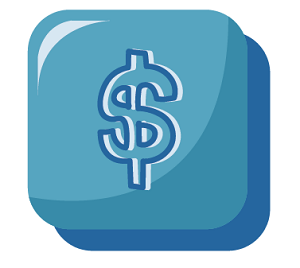 The fifth step is taking the viral traffic that you get and making money off of it by using AdSense or Taboola. I believe AdSense is the best platform to make money off of these viral websites because AdSense is ready to show ads according to what your website or blog is about. You don’t have to go search for affiliate products or something like that. AdSense does that job for you. Google takes everything into consideration and shows people the ad that they will definitely click on. So, if you have 100,000 people visiting your website, your earnings are probably going to be massive. You also have the option of using a new ad system that’s called Taboola, or a similar system that is called Outbrain. These systems show viral posts on your website. For example, you can add to your blog posts the code of Taboola or Outbrain. The blog posts are constructed in a way that people will want to click on them. Every time someone clicks on these posts, you make money. People can integrate it on their websites, or anywhere they want. It is just that simple. The only downside to this is that you have to have at least 100,000 views to your site per month in order to be able to access these platforms. These platforms want high-quality traffic on their customers’ websites. They don’t want just any random person to integrate their system onto their website by selling traffic. They want quality traffic, and this is something that you can consider once you are on a more advanced level. I highly recommend that when you’re starting out, use AdSense. Then, you can use Taboola and Outbrain. For example, if I’m reading an article about how to make money online, I would automatically see a post by Taboola or Outbrain telling me, “These are the top 5 ways to make money instantly.” This is how these platforms drive traffic to other people’s websites, and every time somebody clicks on those links, you get paid. If you have a course or another type of product, you can also have a lead magnet or something similar installed on your website to generate leads or to make sales. It all depends on your goals, and viral posts help you to achieve these goals.
The fifth step is taking the viral traffic that you get and making money off of it by using AdSense or Taboola. I believe AdSense is the best platform to make money off of these viral websites because AdSense is ready to show ads according to what your website or blog is about. You don’t have to go search for affiliate products or something like that. AdSense does that job for you. Google takes everything into consideration and shows people the ad that they will definitely click on. So, if you have 100,000 people visiting your website, your earnings are probably going to be massive. You also have the option of using a new ad system that’s called Taboola, or a similar system that is called Outbrain. These systems show viral posts on your website. For example, you can add to your blog posts the code of Taboola or Outbrain. The blog posts are constructed in a way that people will want to click on them. Every time someone clicks on these posts, you make money. People can integrate it on their websites, or anywhere they want. It is just that simple. The only downside to this is that you have to have at least 100,000 views to your site per month in order to be able to access these platforms. These platforms want high-quality traffic on their customers’ websites. They don’t want just any random person to integrate their system onto their website by selling traffic. They want quality traffic, and this is something that you can consider once you are on a more advanced level. I highly recommend that when you’re starting out, use AdSense. Then, you can use Taboola and Outbrain. For example, if I’m reading an article about how to make money online, I would automatically see a post by Taboola or Outbrain telling me, “These are the top 5 ways to make money instantly.” This is how these platforms drive traffic to other people’s websites, and every time somebody clicks on those links, you get paid. If you have a course or another type of product, you can also have a lead magnet or something similar installed on your website to generate leads or to make sales. It all depends on your goals, and viral posts help you to achieve these goals. Recap of Steps To Make Your Blog Posts Go Viral
- The first step is being creative with your blog posts by using list-based articles, quizzes, and videos. Use list-based titles like BuzzFeed and ViralNova.
- The second step is to use creative titles as click baits. The first impression of your blog post is based on the title. The title should be as attractive as possible. An example is “Ten Things I Did to Get 3,000 Leads in 4 Days”.
- The third step using Google Trends and YouTube Trends to get viral content. You can get viral content that’s being viewed the most and use that content to cause your blog post to go viral on the Internet.
- The fourth step is making use of social media. Find your target audience. Find where your target audience is present online. Once you find your audience, target them on the websites. Start by using free methods first, and once you are successful on them, you can use the paid systems available to you. Reddit, Facebook, and Pinterest have their own ad systems.
- Fifth, enjoy the increased traffic to your blog and make money by practically doing nothing. You can use AdSense, Taboola, or have your lead magnet to sell your products. Do whatever you want to make money from the huge amount of traffic that you obtain.
Connect With Rohan
There is a viral marketing course in which I teach people, step-by-step, how I get 100,000 visitors every month to my website. This course is available at Udemy, and I’m offering that course at a special discount exclusively to the Real Fast Results subscribers. You can take advantage of this by clicking on the link available within the “Resources” section.Daniel's Real Fast Results Tips: Viral Blog Posts
Resources
Rohan's Udemy Course: Viral Marketing - How I Get 100,000 Views Monthly On My Site Dr. Scott Brown Blog: WorryFreeWealth.com List Based Article Sites: BuzzFeed ViralNova Free Viral Content Tools: Google Trends YouTube Trends Top Social Media Sites To Share Viral Content: Pinterest Facebook Reddit Free Design Tool: Canva.com Ad Sites: AdSense Taboola OutbrainReal Fast Results Community
If you are diggin’ on this stuff and really love what we’re doing here at Real Fast Results, would you please do me a favor? Head on over to iTunes, and make sure that you subscribe to this show, download it, and rate & review it. That would be an awesome thing. Of course, we also want to know your results. Please share those results with us at http://www.realfastresults.com/results. As always, go make results happen!©2016 Daniel Hall
